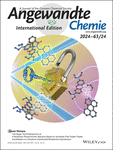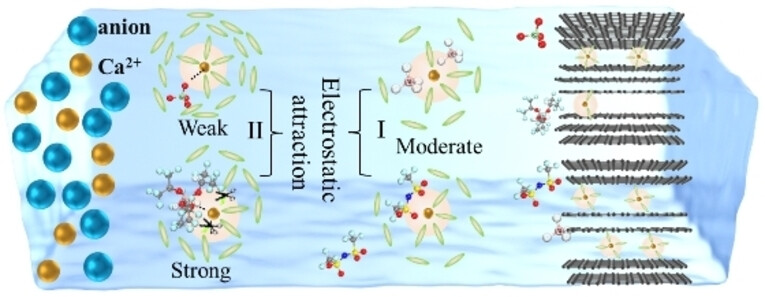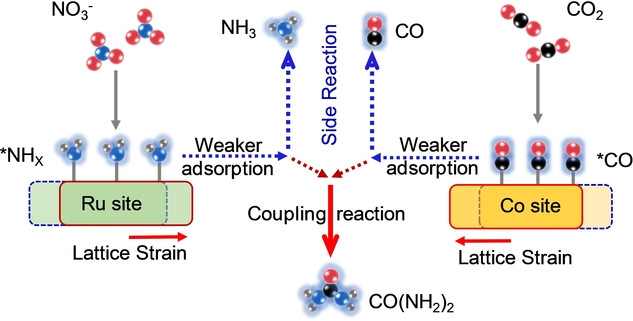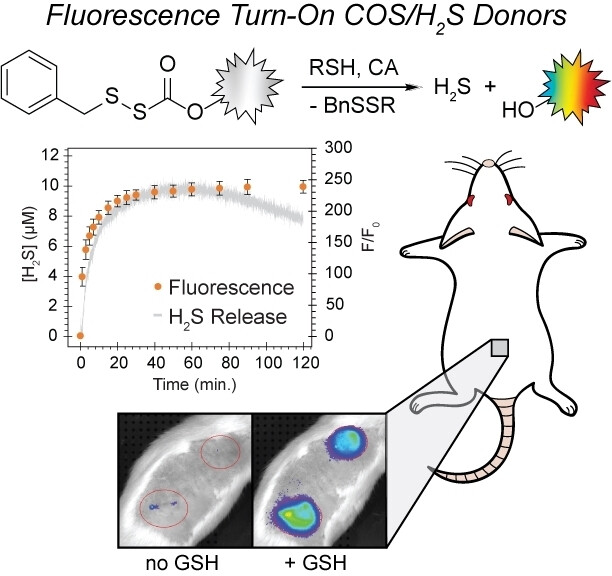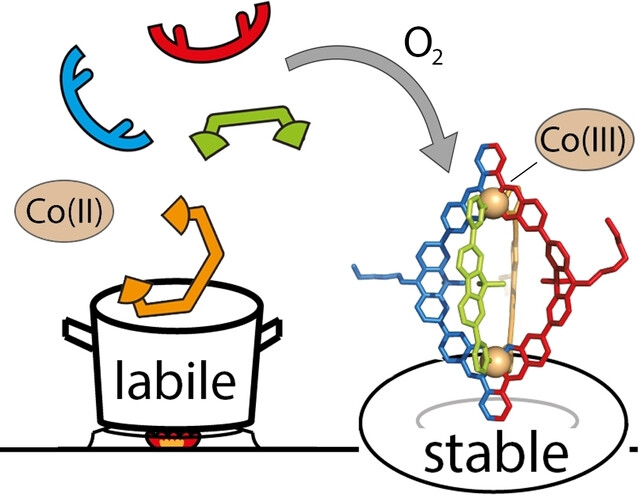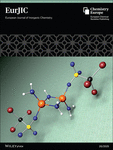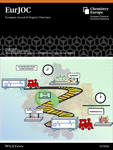Journal list menu
Export Citations
Download PDFs
Covers
Cover Picture: A Nonlinear Photochromic Reaction Based on Sensitizer-Free Triplet–Triplet Annihilation in a Perylene-Substituted Rhodamine Spirolactam (Angew. Chem. Int. Ed. 24/2024)
- First Published: 27 May 2024
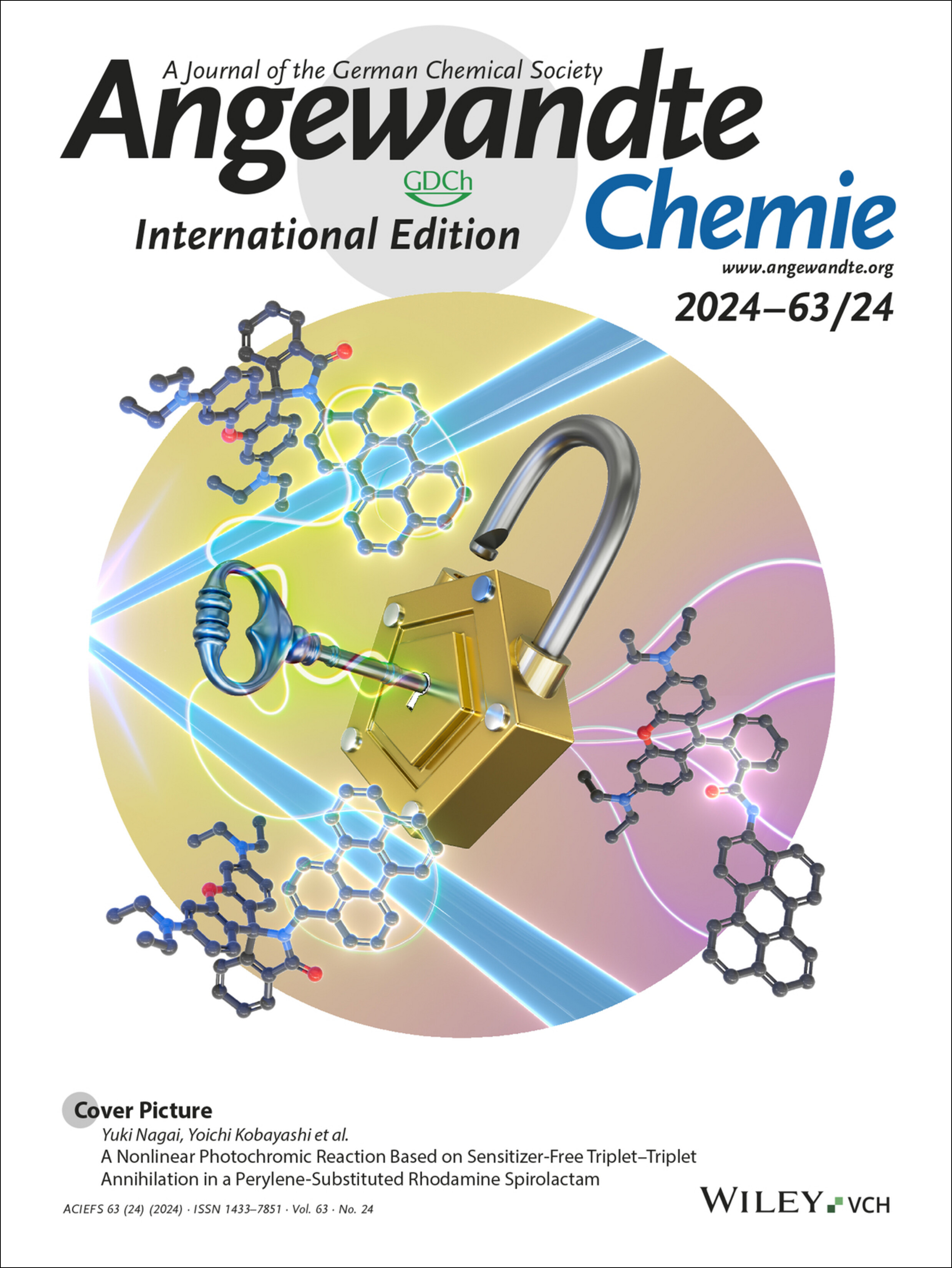
Nonlinear photochromic reaction of a rhodamine spirolactam derivative easily synthesized from rhodamine B has been achieved in the Research Article (e202404140) by Yuki Nagai, Yoichi Kobayashi et al. The nonlinear behavior results from efficient intersystem crossing and thereby triplet–triplet annihilation without triplet sensitizers. In addition, using triplet sensitizers extends the responsive wavelength from the blue to red region.
Inside Cover: Disaggregation-Activated pan-COX Imaging Agents for Human Soft tissue Sarcoma (Angew. Chem. Int. Ed. 24/2024)
- First Published: 27 May 2024
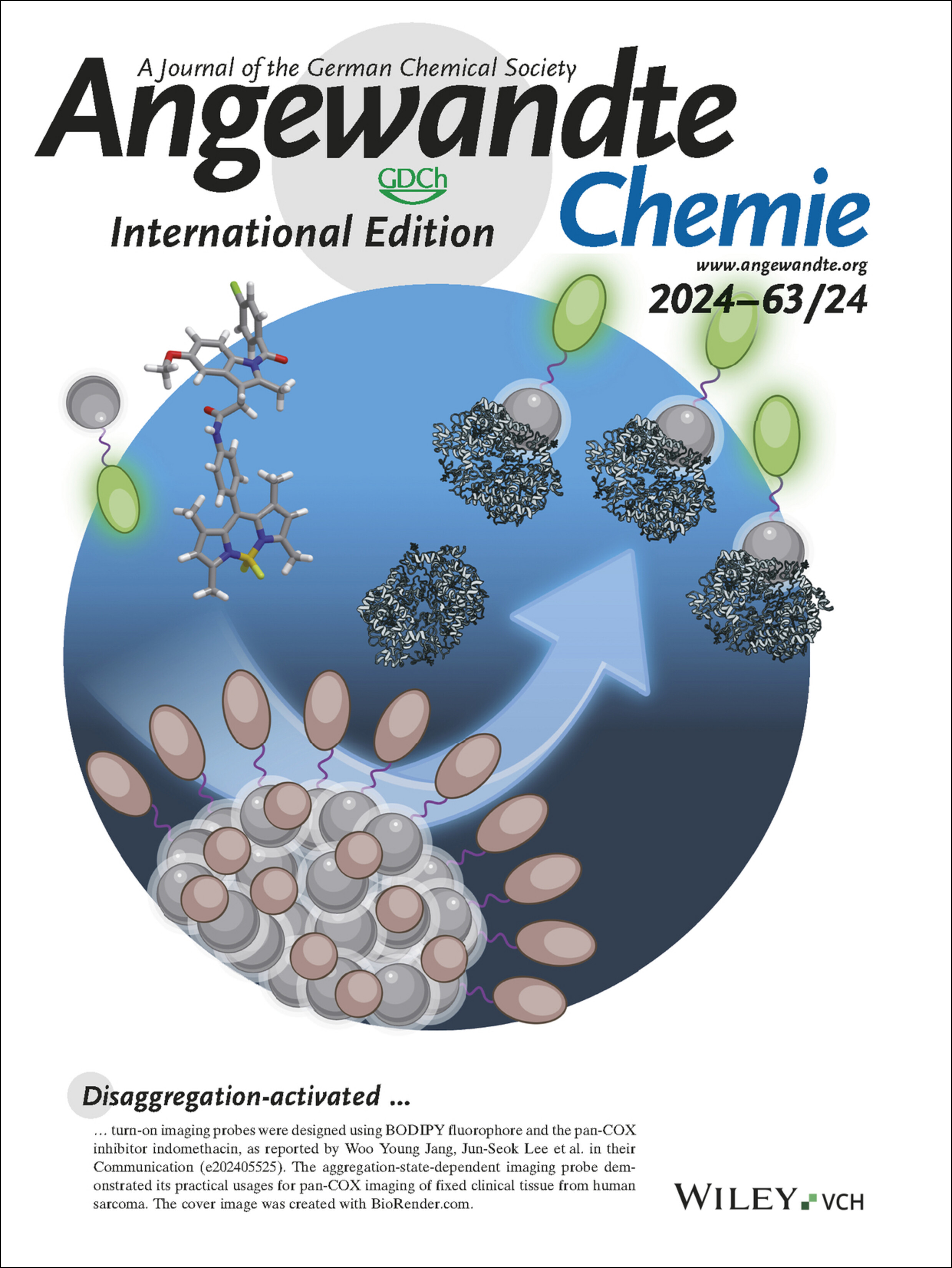
Disaggregation-activated turn-on imaging probes were designed using BODIPY fluorophore and the pan-COX inhibitor indomethacin, as reported by Woo Young Jang, Jun-Seok Lee et al. in their Communication (e202405525). The aggregation-state-dependent imaging probe demonstrated its practical usages for pan-COX imaging of fixed clinical tissue from human sarcoma. The cover image was created with BioRender.com.
Inside Back Cover: Stereoselective Synthesis of Polysubstituted Conjugated Dienes Enabled by Photo-Driven Sequential Sigmatropic Rearrangement (Angew. Chem. Int. Ed. 24/2024)
- First Published: 27 May 2024
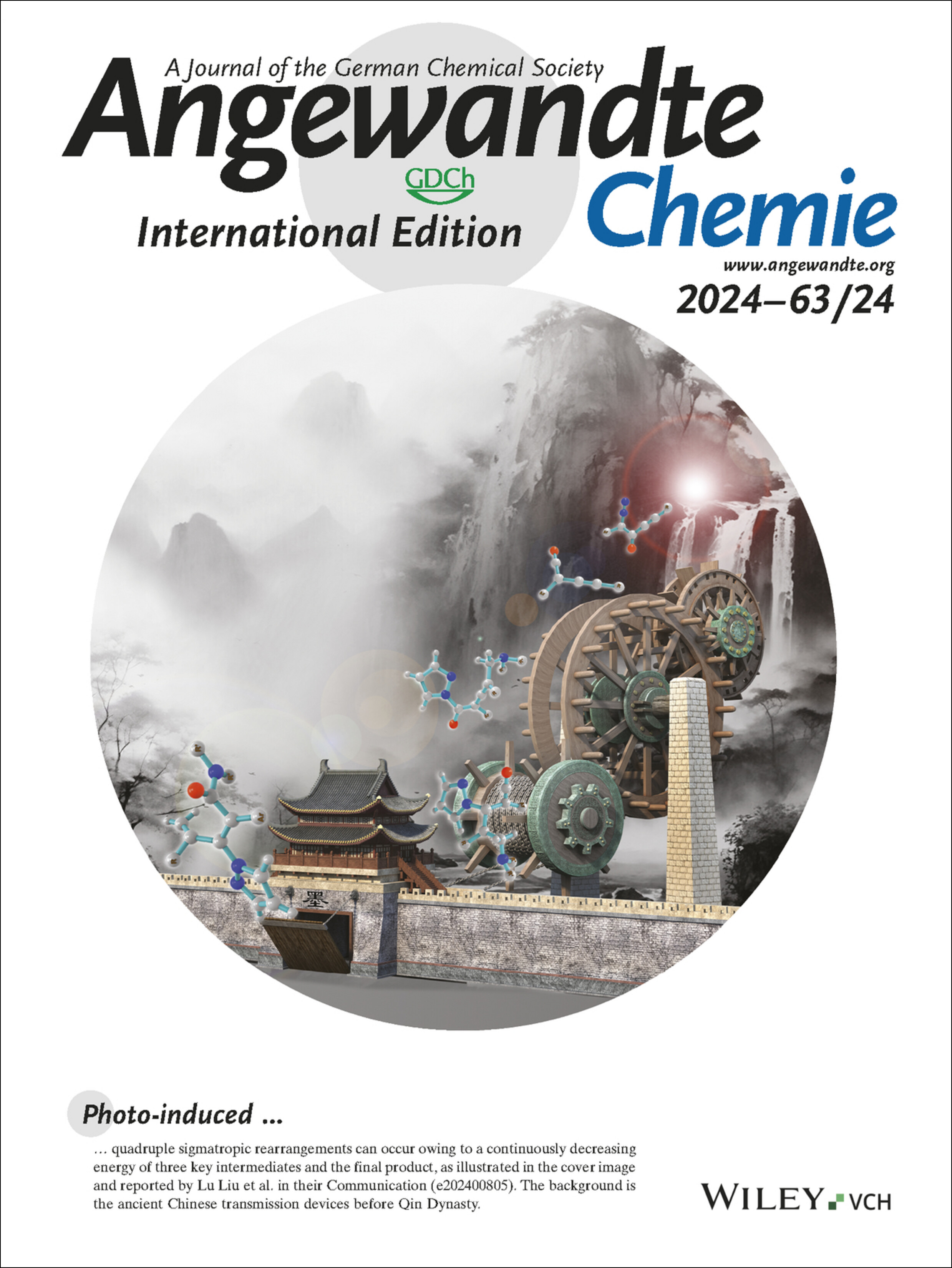
Photo-induced quadruple sigmatropic rearrangements can occur owing to a continuously decreasing energy of three key intermediates and the final product, as illustrated in the cover image and reported by Lu Liu et al. in their Communication (e202400805). The background is the ancient Chinese transmission devices before Qin Dynasty.
Back Cover: Anisotropic Semicrystalline Homopolymer Dielectrics for High-Temperature Capacitive Energy Storage (Angew. Chem. Int. Ed. 24/2024)
- First Published: 27 May 2024

Novel polymeric dielectrics that can operate at high electric field at high temperature were developed by Yingshuang Shang, Haibo Zhang, Chen Shen in their Research Article (e202319766). The compounds are a promising capacitive energy storage material for application under extreme conditions. Illustrated in the picture are the structural features that enable the excellent dielectric performance, namely the intrinsic formation and anisotropic orientation of the polymer nanocrystallites.
Graphical Abstract
Announcement
Introducing …
Jiaoyi Ning
- First Published: 16 April 2024

“The most important future applications of my research are flexible/wearable electronic devices… The biggest challenge facing my generation of scientists is the intense pressure to secure tenure and research funding within limited timelines, while most groundbreaking discoveries requires long-term experience and knowledge accumulation…” Find out more about Jiaoyi Ning in her Introducing… Profile.
Minireviews
Solar Fuel
Metal Poly(heptazine imides) as Multifunctional Photocatalysts for Solar Fuel Production
- First Published: 30 April 2024

Metal poly(heptazine imide) (MPHI), a novel 2D ionic carbon nitride, has been recognized as an emerging photocatalyst with distinctive properties. This minireview summarizes the recent advancements on the synthetic strategies, state-of-the-art characterizations and the application of MPHI toward photocatalytic solar fuel production. We address crucial perspectives and challenges in employing high-performance MPHIs for solar energy conversion.
Reviews
Polymer Chemistry
Recent Advances in Environmentally Friendly Dual-crosslinking Polymer Networks
- First Published: 08 April 2024
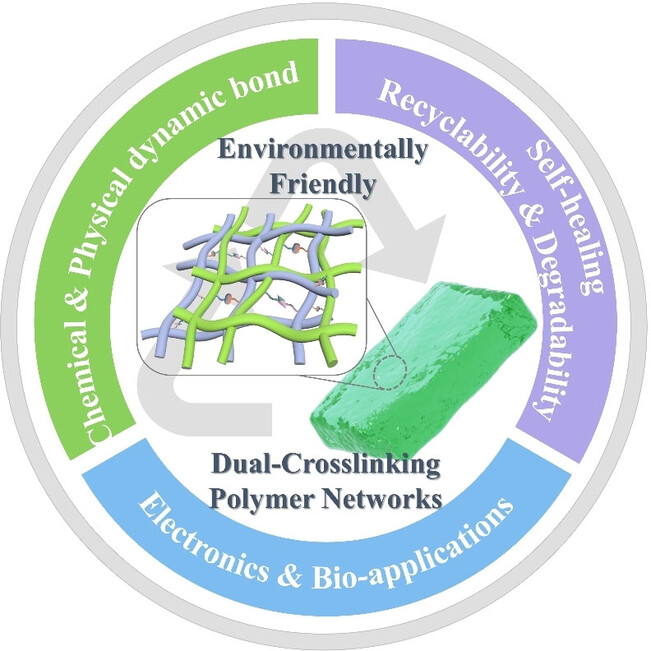
Environmentally friendly dual-crosslinking polymer networks (EF-DCPNs) emerge as breakthrough solutions to address the trade-off between mechanical robustness and dynamic behaviors, while greatly eliminating environmental impacts. This review summarizes current status of synthesis, properties, and applications of EF-DCPNs and provides perspectives on the future development in this important field.
Photocatalysis
Best Practices for Experiments and Reports in Photocatalytic Methane Conversion
- First Published: 04 April 2024
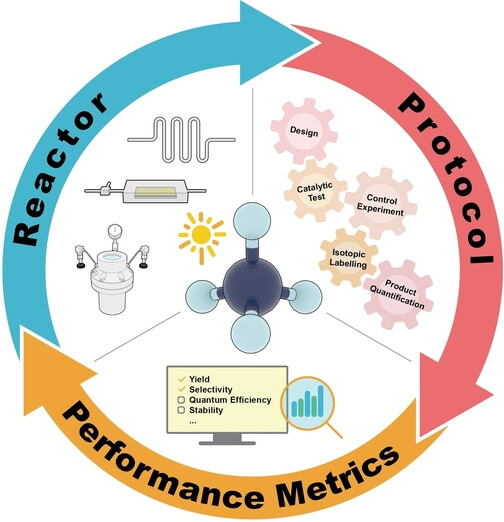
This review intends to establish standardized practices for experimental procedures and reporting metrics in photocatalytic CH4 conversion. It is structured into sections that focus on reactor design, products measurement and definition of performance metrics. We provide comprehensive insights into the field of photocatalytic CH4 conversion, and envision that this overview will promote the transition of solar fuel technology from laboratory to manufacture.
Research Articles
Hydrogen Evolution
Silica Confinement for Stable and Magnetic Co−Cu Alloy Nanoparticles in Nitrogen-Doped Carbon for Enhanced Hydrogen Evolution
- First Published: 10 April 2024

A facile yet effective spatial confinement strategy is proposed to construct high-efficiency catalysts through carbonizing a mesoporous silica-confined Co−Cu bimetal–organic framework for hydrogen evolution from AB hydrolysis. The optimized Co0.8Cu0.2@NC@mSiO2 catalyst exhibits superior activity, outstanding stability, and magnetic recyclability for hydrogen evolution from AB hydrolysis under extremely mild conditions.
Ca-Ion Batteries | Hot Paper
Deciphering Anion-Modulated Solvation Structure for Calcium Intercalation into Graphite for Ca-Ion Batteries
- First Published: 12 April 2024
Electrochemistry | Hot Paper
Multidimensional Electrochemistry Decodes the Operando Mechanism of Hydrogen Oxidation
- First Published: 13 April 2024
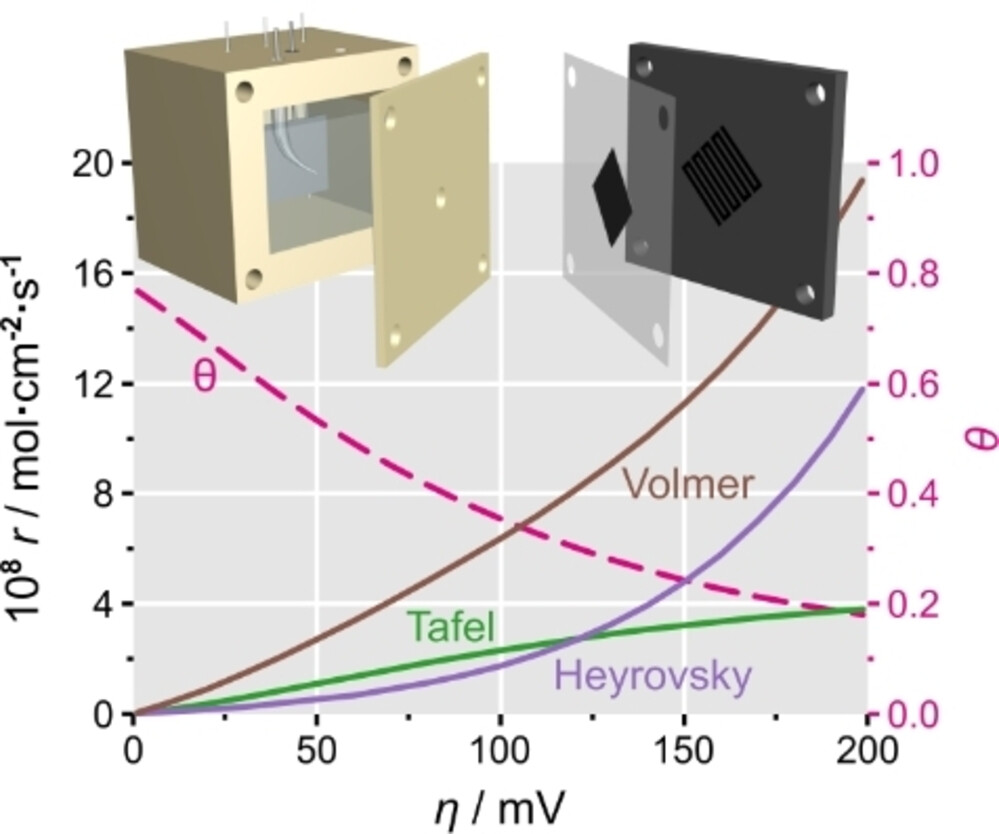
By combining DC voltammetry and AC impedance spectroscopy, the operando mechanism of the hydrogen oxidation reaction (HOR) conducted on a gas-diffusion electrode was decoded through data co-fitting. The reaction rates of three elementary steps (Tafel, Heyrovsky, and Volmer) over a practical potential range were thus distilled individually, revealing that the Volmer step had never been a rate determining step as presumed in previous reports.
Biosensing
Magnetic Silica-Coated Fluorescent Microspheres (MagSiGlow) for Simultaneous Detection of Tumor-Associated Proteins
- First Published: 05 April 2024
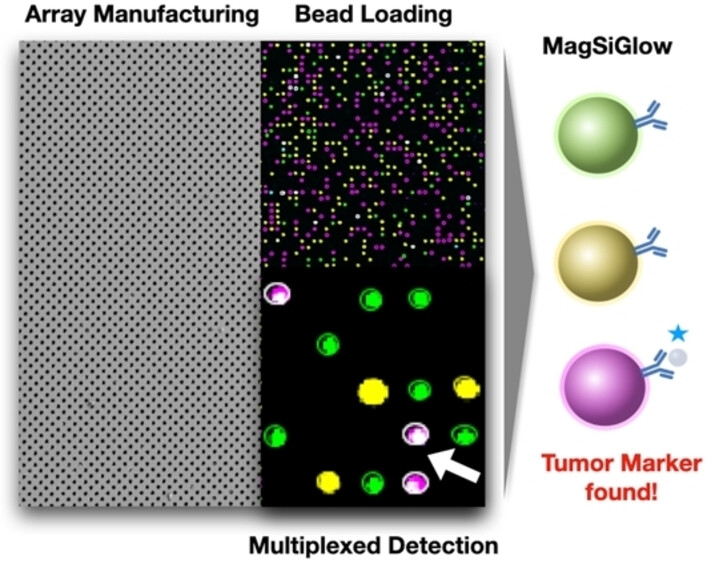
A rapid multiplexed, on-bead immune assay using highly fluorescent magnetic microspheres (MagSiGlow) loaded in microarrays to achieve simultaneous detection and co-localization of 7500 microspheres per image. We demonstrate remarkable sensitivity and an over 85 % reduction in signal cross-over in the simultaneous detection of tumor-associated protein biomarkers.
Energy Storage | Hot Paper
Anisotropic Semicrystalline Homopolymer Dielectrics for High-Temperature Capacitive Energy Storage
- First Published: 10 April 2024
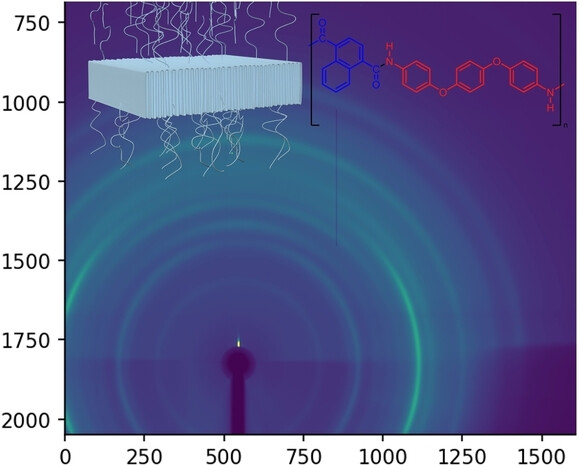
High-temperature homopolymer dielectrics with anisotropy have been developed by leveraging the hierarchical structure in semicrystalline polymers. The unique ordering of lamellae in our dielectric films endue a significantly increased breakdown strength and a reduced leakage current compared to amorphous films.
Heterogeneous Catalysis
In Situ Formation of Platinum-Carbon Catalysts in Propane Dehydrogenation
- First Published: 11 April 2024
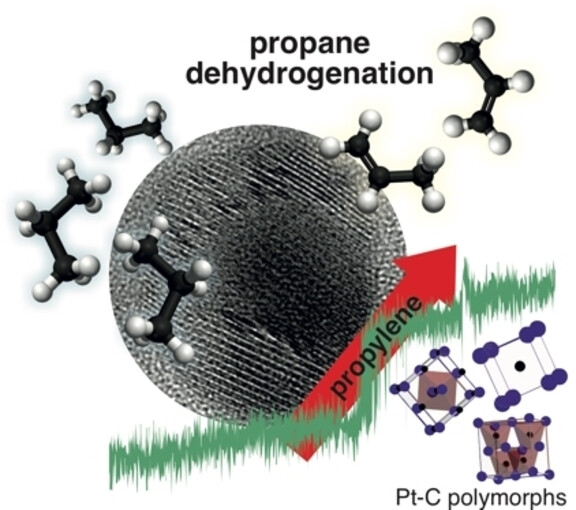
Propane dehydrogenation over Pt nanoparticles is an essential industrial reaction to produce propylene. However, the structures that form under reaction conditions have remained elusive. Using operando transmission electron microscopy (OTEM) we found that in situ generated ordered Pt−C solid solutions are responsible for heightened selectivity. Its impact on propane dehydrogenation is discussed.
Organic Crystals
Strategies to Diversification of the Mechanical Properties of Organic Crystals
- First Published: 08 April 2024
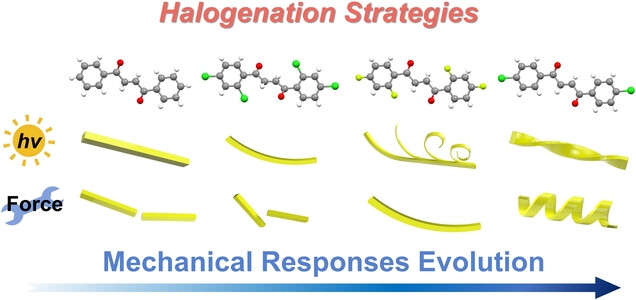
This study demonstrates the effects of halogenation on the mechanical and photomechanical behavior of organic crystals. Starting with (E)-1,4-diphenylbut-2-ene-1,4-dione, the brittle photoinert crystals evolve into mechanically flexible, photochemically reactive crystals via double and quadruple halogenation, an approach that advocates for combined chemical and crystal engineering strategies to determine the key factors determining the solid-state response dynamics.
Water Splitting
Operando Spectroscopic Monitoring of Metal Chalcogenides for Overall Water Splitting: New Views of Active Species and Sites
- First Published: 08 April 2024
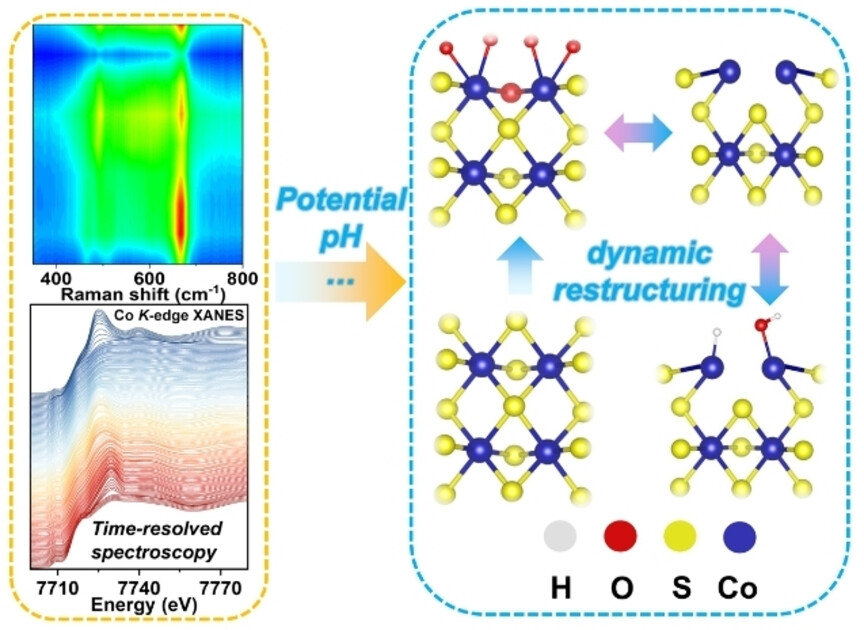
Combined operando XAS and electrochemical characterizations unravel a divergent structural optimization of cobalt sulfide catalysts toward overall water splitting in different media. Our results highlight the crucial influence of in situ formed active species on the catalytic performance, and we show that these transient coordination environments are not evident from ex situ characterizations.
Oxygen Reduction Reaction | Very Important Paper
Strategies for Achieving Ultra-Long ORR Durability—Rh Activates Interatomic Interactions in Alloys
- First Published: 09 April 2024
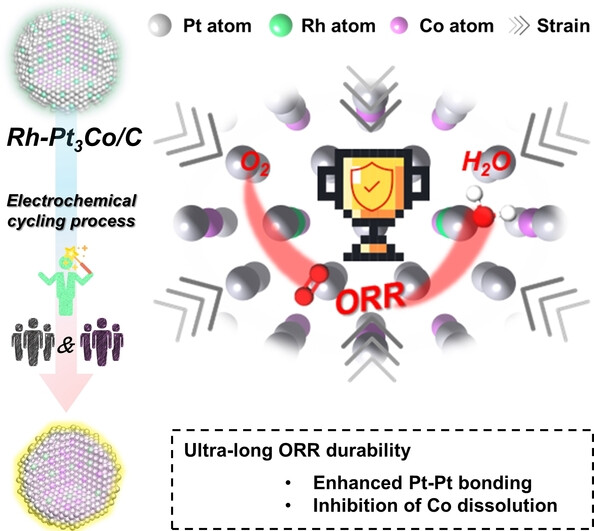
By modulating the interatomic interactions between the constituent atoms of the catalyst, a novel approach has been introduced to prevent the dissolution of transition metals, resulting in ultra-long durability in the oxygen reduction reaction (ORR). Rh−Pt3Co/C catalysts demonstrate high activity and excellent durability with low platinum group metal (PGM) loading.
Skeletal Editing | Very Important Paper
Controllable Skeletal and Peripheral Editing of Pyrroles with Vinylcarbenes
- First Published: 10 April 2024
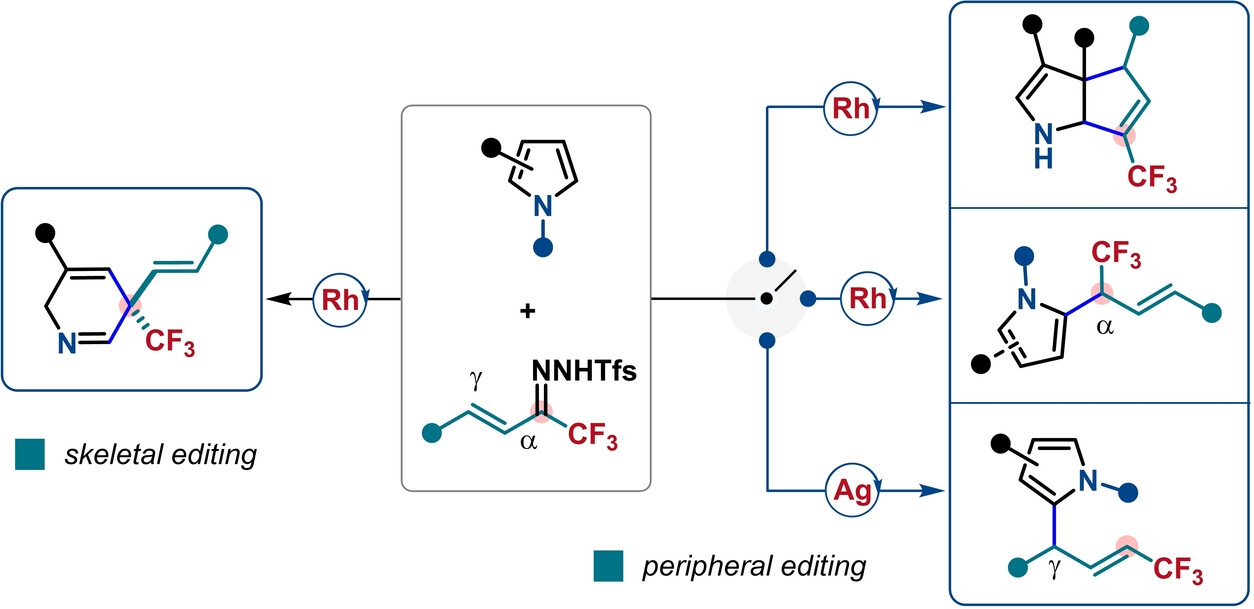
A highly controllable molecular editing strategy of pyrroles was achieved by using trifluoromethyl vinyl N-triftosylhydrazones as vinylcarbene precursors, which led to the first dearomative single-atom skeletal editing of pyrroles through carbon-atom insertion, as well as three types of peripheral editing reactions: α- or γ-selective C−H insertion, and [3+2] cycloaddition.
Photoredox Catalysis
Cooperative Photoredox and Cobalt-Catalyzed Acceptorless Dehydrogenative Functionalization of Cyclopropylamides towards Allylic N,O-Acyl-acetal Derivatives
- First Published: 12 April 2024

We report a novel chemoselective dehydrogenative functionalization of cyclopropylamides enabled by cooperative photoredox and cobalt catalysis for forging the allylic N,O-acyl-acetal scaffolds in an environmental-friendly and atom-economic fashion. The starting materials were readily available and the transformation proceeded under extremely mild conditions with good functional group tolerance and broad scopes.
Urea Electrosynthesis
Breaking the Scaling Relationship in C−N Coupling via the Doping Effects for Efficient Urea Electrosynthesis
- First Published: 09 April 2024
Gold Extraction | Hot Paper
A 2D Acridine-Based Covalent Organic Framework for Selective Detection and Efficient Extraction of Gold from Complex Aqueous-Based Matrices
- First Published: 12 April 2024
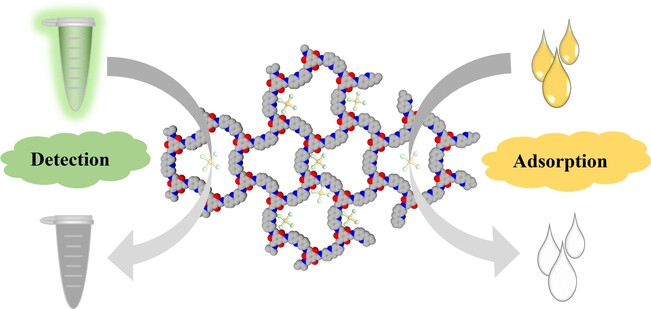
A 2D acridine-based covalent organic framework (TpDa-COF) was prepared for the selective detection and efficient capture of gold. Experimental characterizations and theoretical calculations reveal that the a-photoinduced electron transfer, selective coordination and reductive process of Au(III) to Au(0) are the possible sensing and adsorption mechanisms. Furthermore, TpDa-COF exhibits ultrahigh capture efficiency (>96 %) for gold in real water environments including river water, seawater and CPU leaching solutions.
Polymer Chemistry | Hot Paper
DNA Nanotechnology
Layer-Controllable “2.5D” DNA Origami Crystals Synthesized by a Hierarchical Assembly Strategy
- First Published: 05 April 2024
Imaging
An Expanded Palette of Fluorescent COS/H2S-Releasing Donors for H2S Delivery, Detection, and In Vivo Application
- First Published: 05 April 2024
Peptides
A Stapled Peptide Inhibitor Targeting the Binding Interface of N6-Adenosine-Methyltransferase Subunits METTL3 and METTL14 for Cancer Therapy
- First Published: 12 April 2024
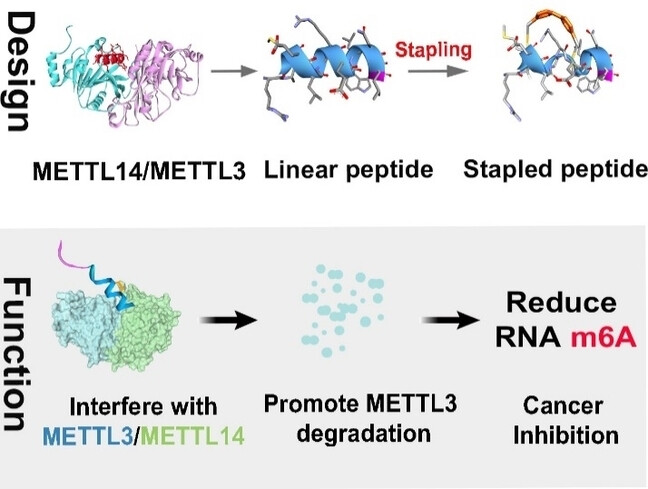
We report a stapled peptide inhibitor, RSM3, of the N6-adenosine-methyltransferase subunit METTL3, discovered from the METTL3–METTL14 structure. This inhibitor induces METTL3 degradation and suppresses m6A mRNA methylation, differently from the mechanism of small molecule STM2457. RSM3 exhibits remarkable anticancer efficacy in a PC3 prostate cancer cell line xenograft tumor model, highlighting the potential of drug design targeting METTL3.
Supramolecular Chemistry
Functionalization of Supramolecular Polymers by Dynamic Covalent Boroxine Chemistry
- First Published: 08 May 2024

Boronic acid self-condensation provides ready access to boroxine-based, C3-symmetrical monomer architectures that can cooperatively assemble into helical supramolecular polymers. The dynamic boroxine scaffold enables fast intermolecular exchange of boronic acid between different monomers and facilitates the introduction of functionality into assembled structures by co-condensation with functional boronic acids.
Electrocatalytic Urea Synthesis
Overcoming Electrostatic Interaction via Pulsed Electroreduction for Boosting the Electrocatalytic Urea Synthesis
- First Published: 10 April 2024
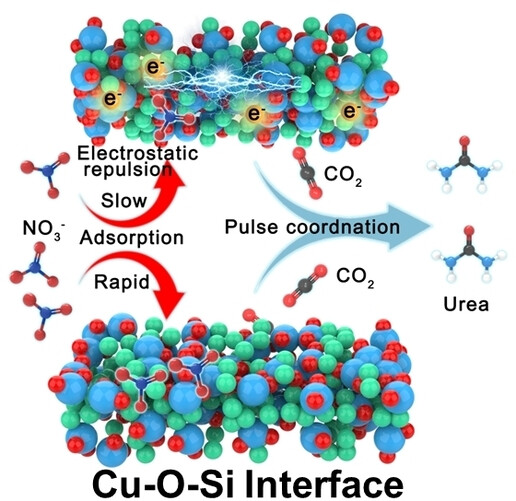
The electrocatalytic C−N coupling from carbon dioxide and nitrate is a sustainable and promising alternative for urea synthesis. We developed a stable CuSiOx catalyst with abundant atomic Cu−O−Si interfacial sites toward urea electrosynthesis, in which Cu species are uniformly dispersed in the silica matrix. Besides, we adopt pulsed electroreduction to overcome electrostatic interaction, promoting nitrate adsorption and reduction to urea.
Lithium-Ion Batteries
Imidazole-Intercalated Cobalt Hydroxide Enabling the Li+ Desolvation/Diffusion Reaction and Flame Retardant Catalytic Dynamics for Lithium Ion Batteries
- First Published: 11 April 2024
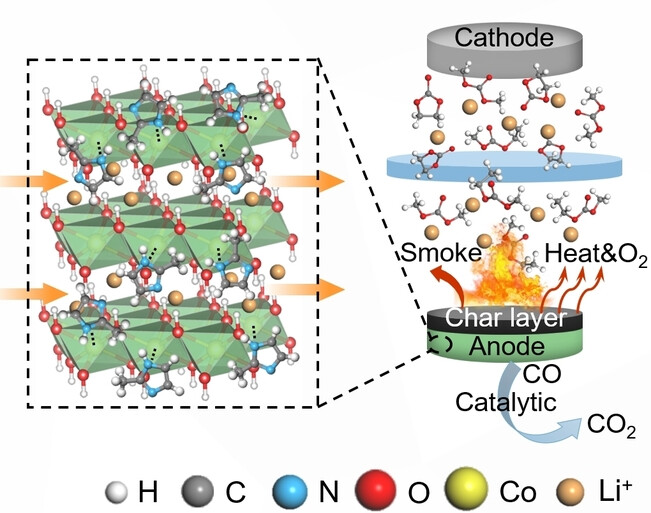
A strategy of intercalated small organic molecules in the anode material was proposed to enhance the capacity and cycle stability of lithium-ion batteries. The introduction of imidazole molecules provides more binding sites for lithium ions, which also can participate in the generation of SEI and maintain the stability of cobalt hydroxide structure. Moreover, the anode material has the function of smoke suppression and toxicity reduction when thermal runaway occurs, which can improve the thermal safety of lithium-ion batteries.
Polymer Chemistry
Metal-Free Atom Transfer Radical Polymerization to Prepare Recylable Micro-Adjuvants for Dendritic Cell Vaccine
- First Published: 10 April 2024
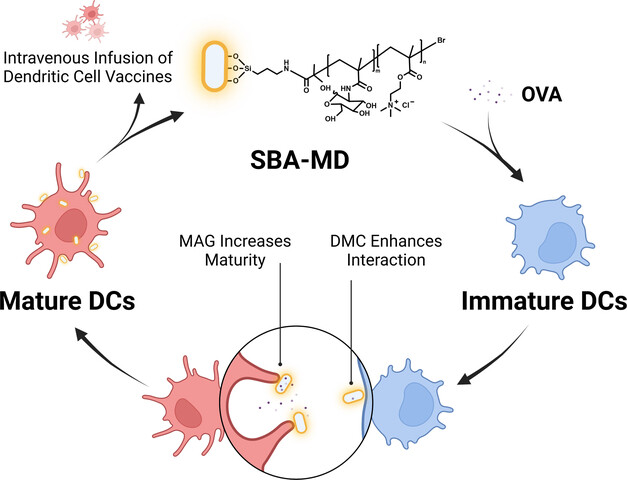
This study introduces an innovative approach that combines high efficacy with safety through the synthesis of P(MAG-co-DMC) based micro-adjuvants. The utilization of metal-free surface-initiated atom transfer radical polymerization enables the production of safe and recyclable adjuvants. Additionally, the adjuvants exhibit a “micro-ligand-mediated maturation enhancement” effect for DC maturation.
Fluoroarenes | Very Important Paper
Unlocking the Metalation Applications of TMP-powered Fe and Co(II) bis(amides): Synthesis, Structure and Mechanistic Insights
- First Published: 02 April 2024
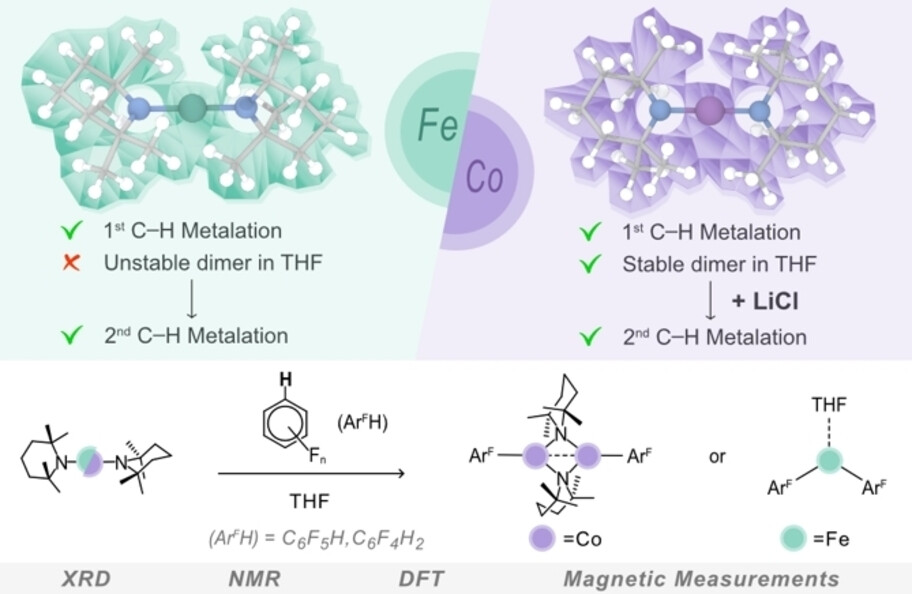
Reversing the more usual trend of replicating transition metal chemistry with main group compounds, this work elaborates the applications of the new earth-abundant d-block amides Fe(TMP)2 and Co(TMP)2 in deprotonative metalation chemistry, a field dominated by highly polar s-block amides such as LiTMP and NaTMP (TMP=2,2,6,6-tetramethylpiperidide).
Glycolipids | Hot Paper
Chemical Synthesis of Acetobacter pasteurianus Lipid A with a Unique Tetrasaccharide Backbone and Evaluation of Its Immunological Functions
- First Published: 06 April 2024
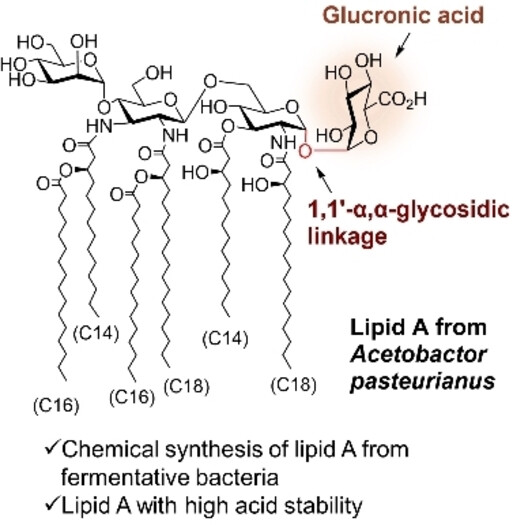
Lipid A contained in fermented foods is expected to be a safe immunostimulant. The first chemical synthesis of fermentative bacteria Acetobacter pasteurianus lipid A, an immune component in black rice vinegar, was achieved via borinic acid catalyzed 1,1’-α,α-glycosylation. Furthermore, glucuronic acid residue, a unique structure of A. pasteurianus lipid A, was found to largely contribute to its immunological and acid-stable properties.
Zn-Ion Batteries | Very Important Paper
Zinc-Ion Anchor Induced Highly Reversible Zn Anodes for High Performance Zn-Ion Batteries
- First Published: 05 April 2024
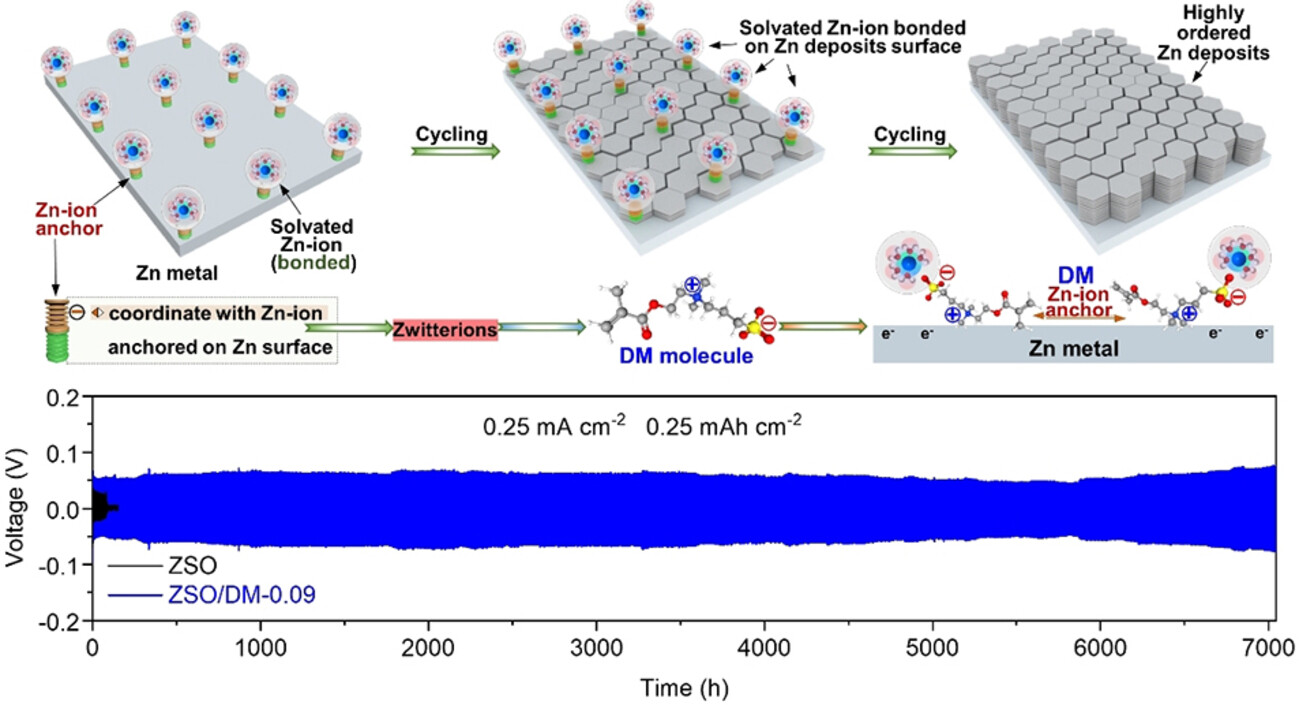
Zn-ion anchoring strategy was proposed to manipulate the coordination structure of solvated Zn-ions and guide the Zn-ion depositional behavior. Specifically, the amphoteric charged ion additives act as zinc-ion anchors, guiding the uniform zinc-ion distribution by using its positively charged groups. While the negatively charged groups reduces the active water molecules within solvation sheaths of Zn-ions, enabling AZMBs with high reversibility and extra-long lifespans.
Electrosynthesis
Cross-selective Deoxygenative Coupling of Aliphatic Alcohols: Installation of Methyl Groups including Isotopic Labels by Nickel Catalysis
- First Published: 11 April 2024

This nickel-catalyzed cross-electrophile coupling reaction provides, for the first time, a cross-selective reaction of two alcohols. Methanol, activated as methyl tosylate, undergoes XEC with a range of secondary alcohols activated as the corresponding mesylates. Catalyst turnover is achieved with a stoichiometric reducing metal or electrochemically. This transformation provides facile incorporation of isotopic labels, by deuteration of ketone intermediates and/or employing isotopically labelled methanol.
Nanozymes
Tensile Strain-Mediated Bimetallene Nanozyme for Enhanced Photothermal Tumor Catalytic Therapy
- First Published: 09 April 2024
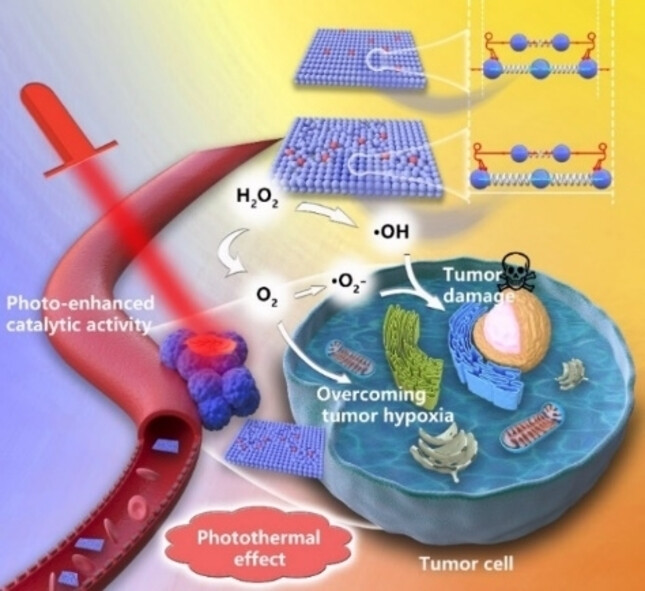
We present the first report on a novel tensile strain-mediated local amorphous RhRu (la-RhRu) bimetallene with exceptional intrinsic photothermal effect and photo-enhanced multiple enzyme-like activities. Functioning as a tumor microenvironment (TME)-responsive nanozyme, la-RhRu exhibits remarkable therapeutic efficacy both in vitro and in vivo. This work highlights the tremendous potential of atomic-scale tensile strain engineering strategy in enhancing tumor catalytic therapy.
Supramolecular Chemistry
Hierarchical Self-Assembly of Multidimensional Functional Materials from Sequence-Defined Peptoids
- First Published: 24 April 2024
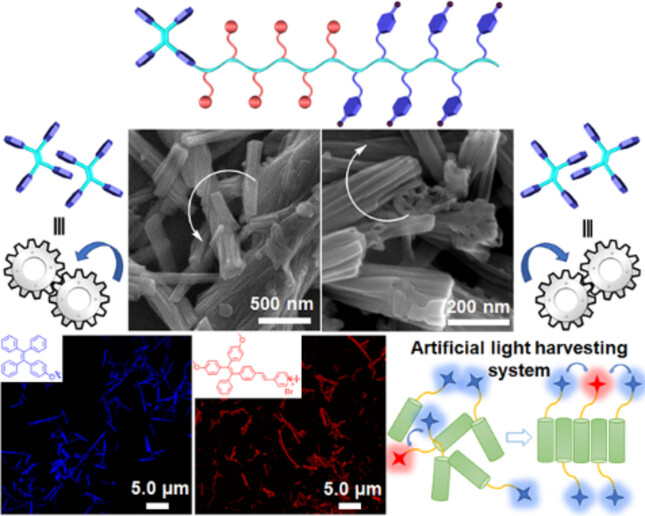
The correlation between microscopic molecular structures of sequenced-defined peptoids and their resultant macroscopic assemblies was explored. By incorporating tetraphenylethylene and its derivative as functional groups at the termini of peptoid sequences, three-dimensional twisted bundles were evolved from discrete nanotubes or nanosheets, further enabling the creation of a highly efficient artificial light harvesting system.
Li Metal Batteries
Revealing the Influence of Electron Migration Inside Polymer Electrolyte on Li+ Transport and Interphase Reconfiguration for Li Metal Batteries
- First Published: 13 April 2024
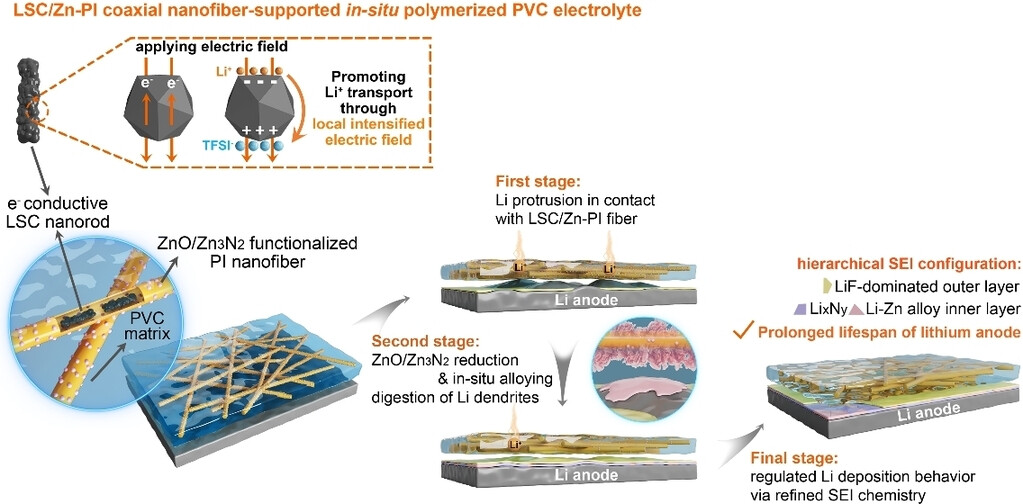
In this work, La0.6Sr0.4CoO3−δ (LSC) enriched with high valence-state Co species and oxygen vacancies is developed as electronically conductive nanofillers embedded within ZnO/Zn3N2-functionalized polyimide nanofiber framework to establish Li+ transport highways for poly vinylene carbonate electrolyte and eliminate nonuniform Li deposits.
Explosive Emulsification
Oversaturating Liquid Interfaces with Nanoparticle-Surfactants
- First Published: 08 April 2024
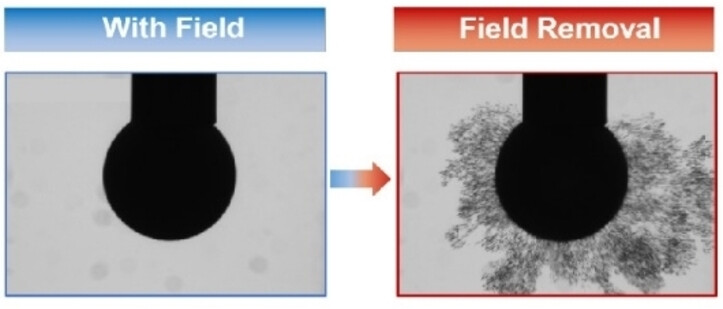
Explore the intriguing world of nanoparticle-surfactants at liquid interfaces. This study delves into how external electric fields can form and influence nanoparticle assemblies, leading to explosive emulsification behavior. It unveils a fascinating interplay between electrostatic forces and physiochemical conditions, offering a glimpse into the untapped possibilities of nanotechnology.
Near-Infrared Radical Emission
Near-Infrared Emission Beyond 900 nm from Stable Radicals in Nonconjugated Poly(diphenylmethane)
- First Published: 08 April 2024
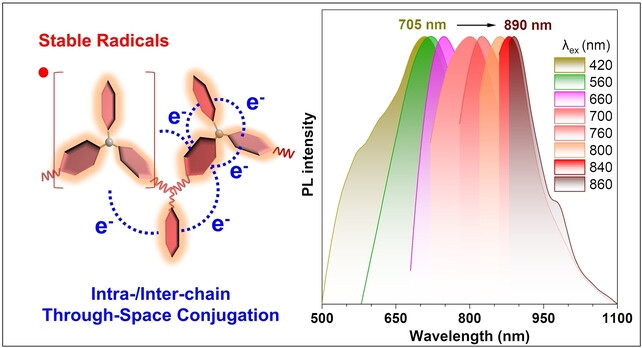
Full-spectrum emission, spanning from blue to near-infrared (beyond 900 nm), is attainable in poly(diphenylmethane) through adjustments in both concentration and excitation wavelength, which is attributed to the formation of stable radicals within the polymer and through-space conjugation. This study not only confirms the efficacy of polymerization in stabilizing radicals but also introduces a pioneering method for producing nonconjugated near-infrared emitters.
Biocatalysis
On the Mechanisms of Hypohalous Acid Formation and Electrophilic Halogenation by Non-Native Halogenases
- First Published: 12 April 2024
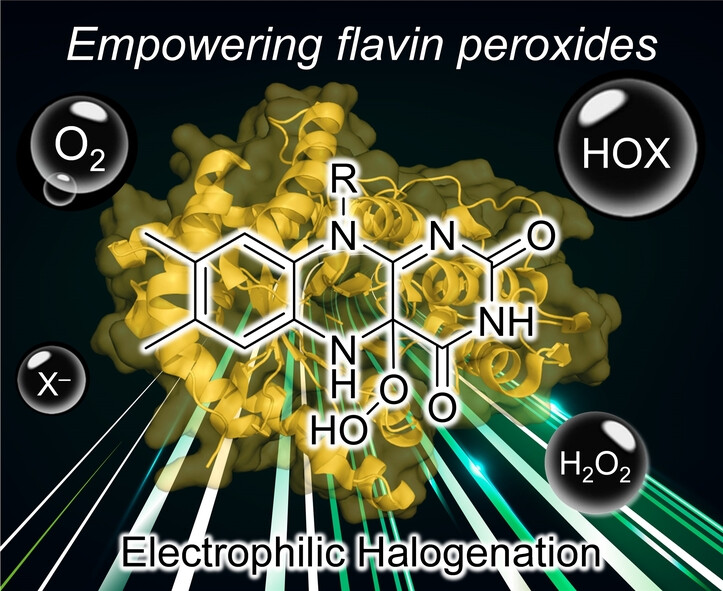
Electrophilic halogenases in nature are typically not efficient. Guided by flavin-dependent halogenase mechanisms and taking advantage of the versatile reactivity of a flavin hydroperoxide adduct and in situ generation of H2O2 by flavin-dependent enzymes, it was possible to promote the formation of a hypohalous acid—which is key for electrophilic halogenation—in various non-native halogenases by rerouting the flavin-generated peroxide.
Electrocatalysis
The Tandem Nitrate and CO2 Reduction for Urea Electrosynthesis: Role of Surface N-Intermediates in CO2 Capture and Activation
- First Published: 08 April 2024
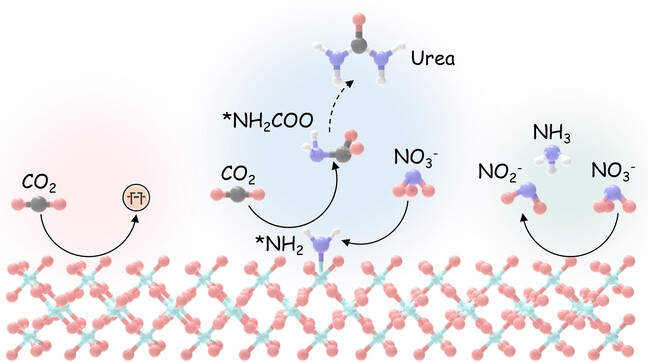
The electrocatalytic coupling reaction of carbon dioxide and nitrate serves as a sustainable strategy for urea synthesis under ambient conditions. Herein we proposed a urea generation pathway via the tandem reduction of nitrate and CO2, in which the critical C−N coupling is achieved by the interaction between the nitrate reduction intermediate of *NH2 and free CO2.
Force Sensors
Self-Powered and Self-Recoverable Multimodal Force Sensors Based on Trap State and Interfacial Electron Transfer
- First Published: 08 April 2024
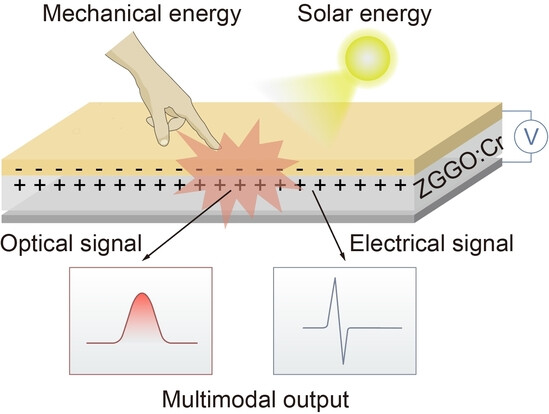
Multimodal force sensor: A self-powered and self-recoverable force sensor based on trap-controlled luminescence and interfacial electron transfer is presented. The magnitude of force can be converted into electrical responses, and force distribution can be visualized by optical signals simultaneously, without any power supply and high-energy irradiation. It has promising applications in a wide range of artificial intelligence systems.
Emissive Metal Halides
Achieving Near-Unity Red Light Photoluminescence in Antimony Halide Crystals via Polyhedron Regulation
- First Published: 14 April 2024
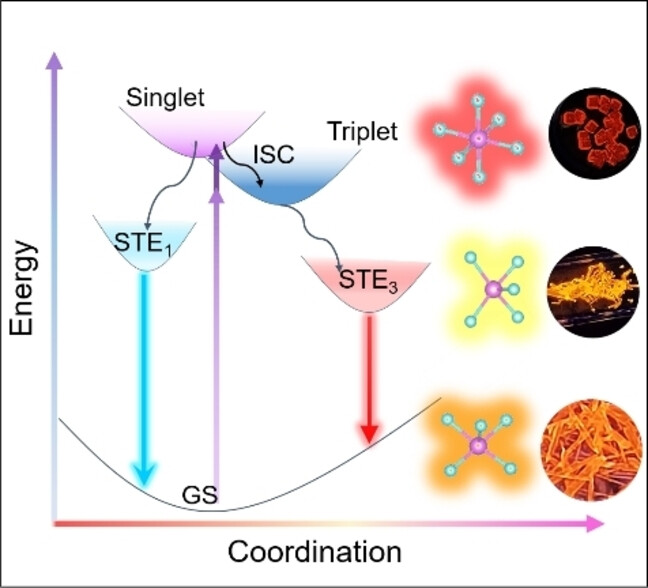
Three (TMS)2SbCl5 crystals have been prepared with diverse [SbCl5]2− configurations and distinct emission color (i.e., red, orange, and yellow) through solvent engineering. It is found that higher coordination symmetry and longer Sb⋅⋅⋅Sb distance are in favor of the larger Stokes shift and lower energy emission. This work sheds insights into the structure-photoluminescence relationship towards development of highly efficient optoelectronic materials.
Triplet-Triplet Annihilation | Hot Paper
A Nonlinear Photochromic Reaction Based on Sensitizer-Free Triplet–Triplet Annihilation in a Perylene-Substituted Rhodamine Spirolactam
- First Published: 10 April 2024
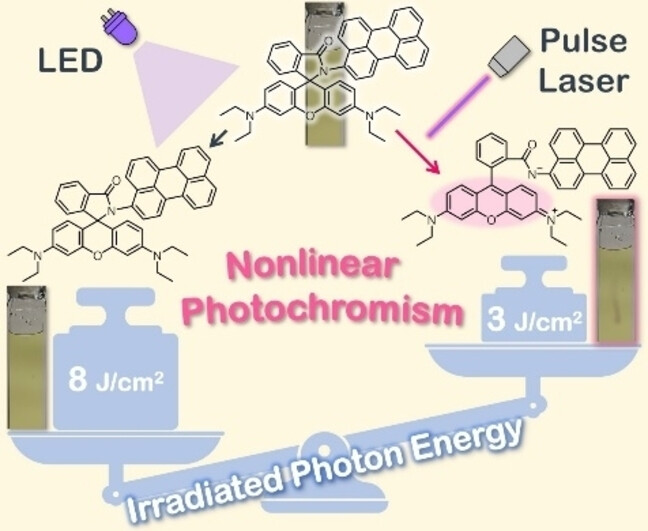
A nonlinear photochromic reaction has been achieved in a perylene-substituted rhodamine spirolactam, which is easily synthesized from rhodamine B. Direct excitation with UV or blue light causes charge transfer and intersystem crossing, followed by triplet–triplet annihilation without triplet sensitizers to cause nonlinear behavior. In addition, using sensitizers enables the extension of the photoresponsivity from the blue to red region.
Conductive MOFs
Gas-Induced Electrical and Magnetic Modulation of Two-Dimensional Conductive Metal–Organic Framework
- First Published: 08 April 2024
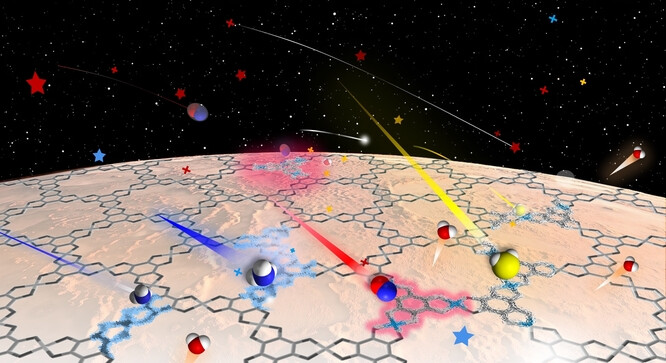
Exposure to gaseous molecules can induce characteristic electrical and magnetic property changes of a semiconductive metal–organic framework (MOF). The underlying interaction mechanism responsible for the electrical and magnetic modulation is found related to the intrinsic physical and chemical properties of the participating molecules which cause specific electronic and structural changes of the MOF.
Crystal Engineering
Photo-Responsive Hydrogen-Bonded Molecular Networks Capable of Retaining Crystalline Periodicity after Isomerization
- First Published: 05 April 2024
C-H Functionalization | Hot Paper
Transition Metal-Free Catalytic C−H Zincation and Alumination
- First Published: 05 April 2024

A transition metal free catalytic C−H zincation and C−H alumination of heteroarenes using (β-diketiminate)-metal complexes, where the only by-products are H2 or CH4, is reported. This is achieved by coupling endergonic C−H metalation with subsequent exergonic dehydrocoupling, with the latter process proceeding by metal-specific pathways.
Heterogeneous Catalysis
Recycling Valuable Alkylbenzenes from Polystyrene through Methanol-Assisted Depolymerization
- First Published: 08 April 2024
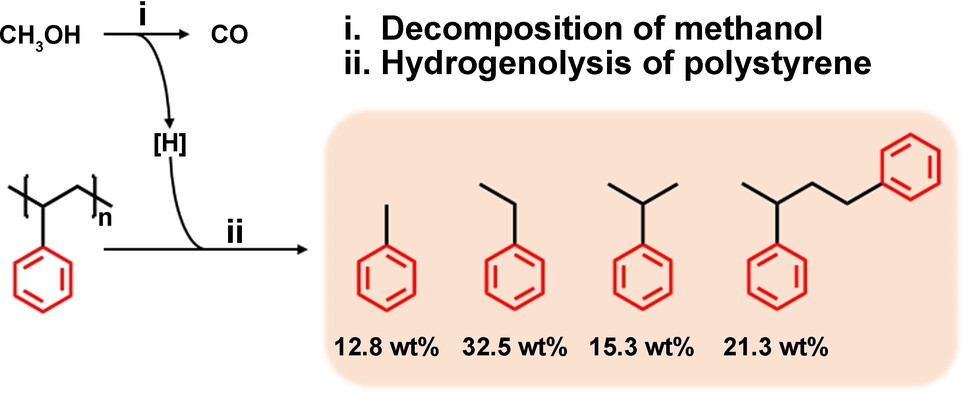
A methanol-assisted depolymerization of PS (PS-MAD) process was developed for effectively converting PS into value-added alkylbenzenes. Methanol is regarded as a hydrogen carrier decomposed in situ to provide moderate pressure of hydrogen which prevents benzene rings hydrogenation and promotes the depolymerization of PS. PS-MAD achieved a high yield of liquid products which accounted for 93.2 wt % of virgin PS over Ru/SiO2 at 280 °C for 6 h.
Photocatalysis | Hot Paper
Organic Donor–Acceptor Thermally Activated Delayed Fluorescence Photocatalysts in the Photoinduced Dehalogenation of Aryl Halides
- First Published: 10 April 2024
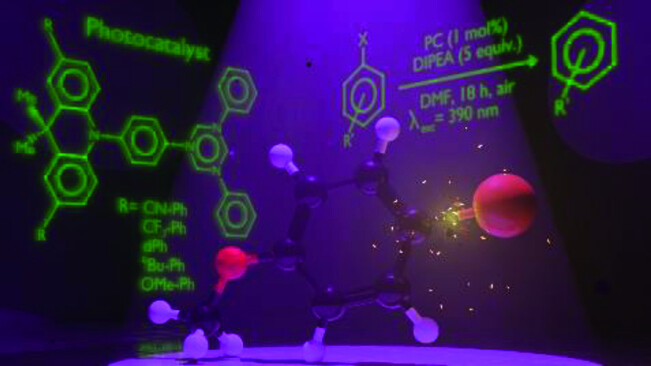
A family of donor-acceptor thermally activated delayed fluorescence compounds based on DMAC-TRZ and containing aryl subtituents on the DMAC donor have been applied as photocatalysts in the dehalogenation of aryl halides having Ered up to −2.72 V vs SCE. Mechanistic studies indicate that these DMAC-TRZ based compounds act as pre-photocatalysts and photodegrade under the reaction conditions, with the photodecomposition product responsible for the photocatalysis.
Zeolites
Synthesis of ZSM-5 Zeolite Nanosheets with Tunable Silanol Nest Contents across an Ultra-wide pH Range and Their Catalytic Validation
- First Published: 09 April 2024
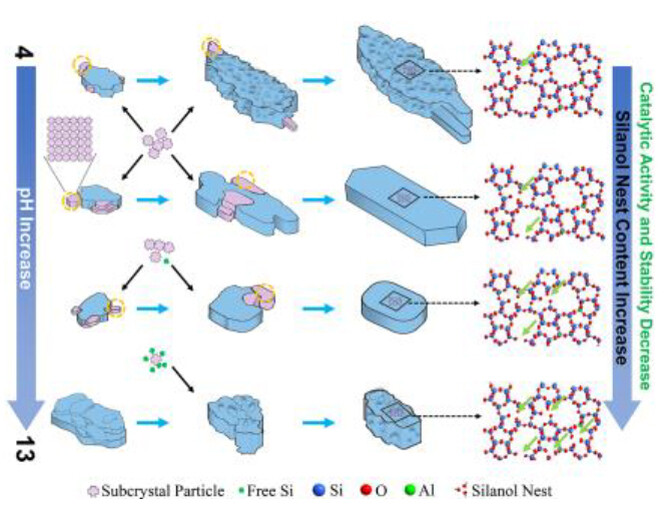
This study presents a method for synthesizing ZSM-5 zeolite nanosheets via aggregation crystallization of zeolite subcrystals within a broad pH range, detailing its crystallization process. pH manipulation enables precise control of silanol nest content, opening new avenues in zeolite engineering. Catalytic results in furfuryl alcohol etherification highlight the positive impact of regulating silanol nest content on catalytic reactions.
Donor-Acceptor Systems | Hot Paper
Anion-Responsive Colorimetric and Fluorometric Red-Shift in Triarylborane Derivatives: Dual Role of Phenazaborine as Lewis Acid and Electron Donor
- First Published: 08 April 2024
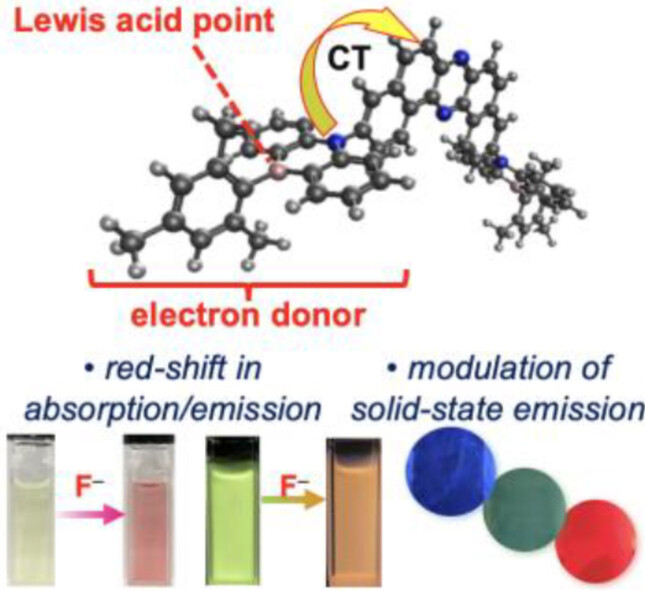
A strategy of modulating photophysical properties by balancing the contradictory role of phenazaborine as a Lewis acid and an electron donor has been used to synthesize anion-responsive triarylborane compounds that displayed significant red-shift in their absorption and photoluminescence spectra in solution. This approach has also been successfully applied to modulate the emission color in polymer films.
Polymer Chemistry
Preserving Mesoporosity in Type III Porous Liquids through Dual-layer Surface Weaving
- First Published: 08 April 2024
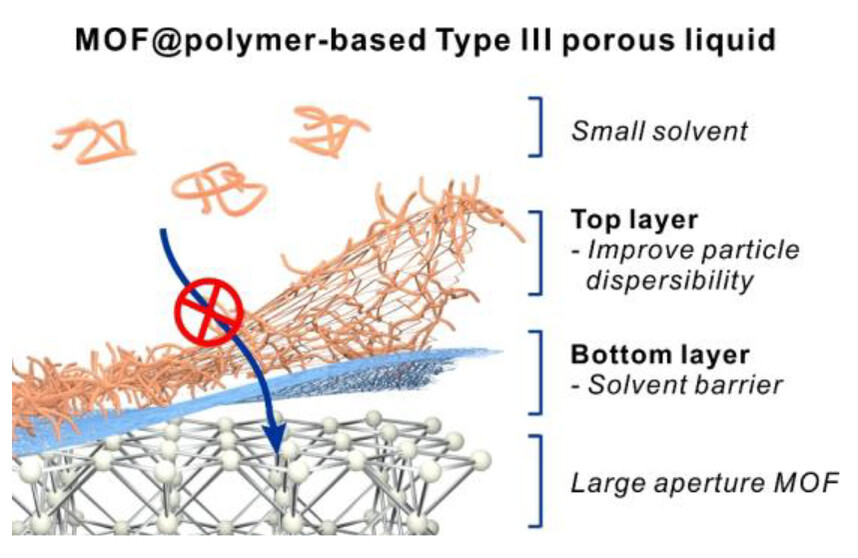
This work reported a dual-layer surface weaving strategy on metal–organic frameworks (MOFs) to realize Type III porous liquids (PLs) with apertures larger than the solvent molecules. The 1st polymer layer, cross-linked poly (t-butyl methacrylate), serves as a physical barrier to block the solvent molecules from entering the MOF pore. The 2nd layer uses a solvent-compatible polymer to reduce PL viscosity. As a result, a PL bearing a 3.1 nm aperture was successfully constructed.
Luminescence
Circularly Polarized Luminescence Induced by Hydrogen-Bonding Networks in a One-Dimensional Hybrid Manganese(II) Chloride
- First Published: 12 April 2024
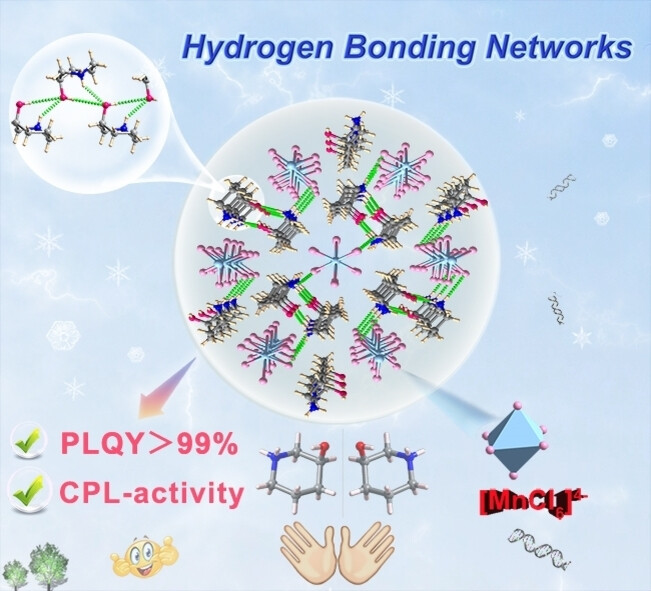
A new one-dimensional (1D) hybrid chiral manganese chloride with near-unity photoluminescence quantum yield (PLQY), circularly polarized luminescence (CPL), and high-thermal stability is presented. It is extremely promising for applications in red circularly polarized light-emitting diodes (CP-LED) and X-ray imaging.
Hydration
Water-Ice Microstructures and Hydration States of Acridinium Iodide Studied by Phosphorescence Spectroscopy
- First Published: 11 April 2024
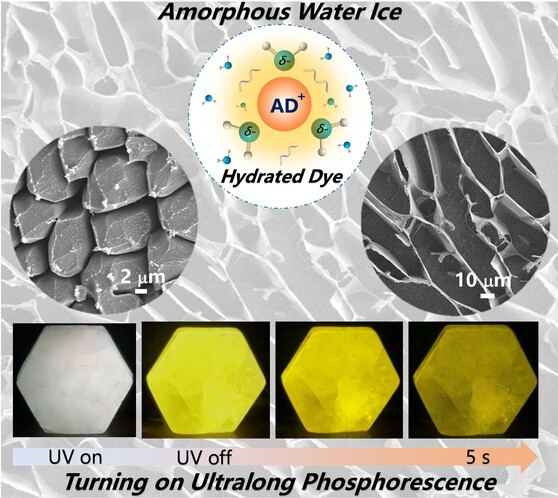
Phosphorescence spectroscopy was utilized to visualize the microstructure transition of water at varying temperatures from 298 K to 77 K at a probe concentration of ~10−5 M, showing higher sensitivity by at least two orders of magnitude than absorption-base techniques. By this unique means, it was found that a trace amount (as low as 10−5 M) of organic hydrophiles could thoroughly prevent the crystallization of water ice at freezing temperatures.
Nitrogen Reduction
Synergistic Al−Al Dual-Atomic Site for Efficient Artificial Nitrogen Fixation
- First Published: 11 April 2024
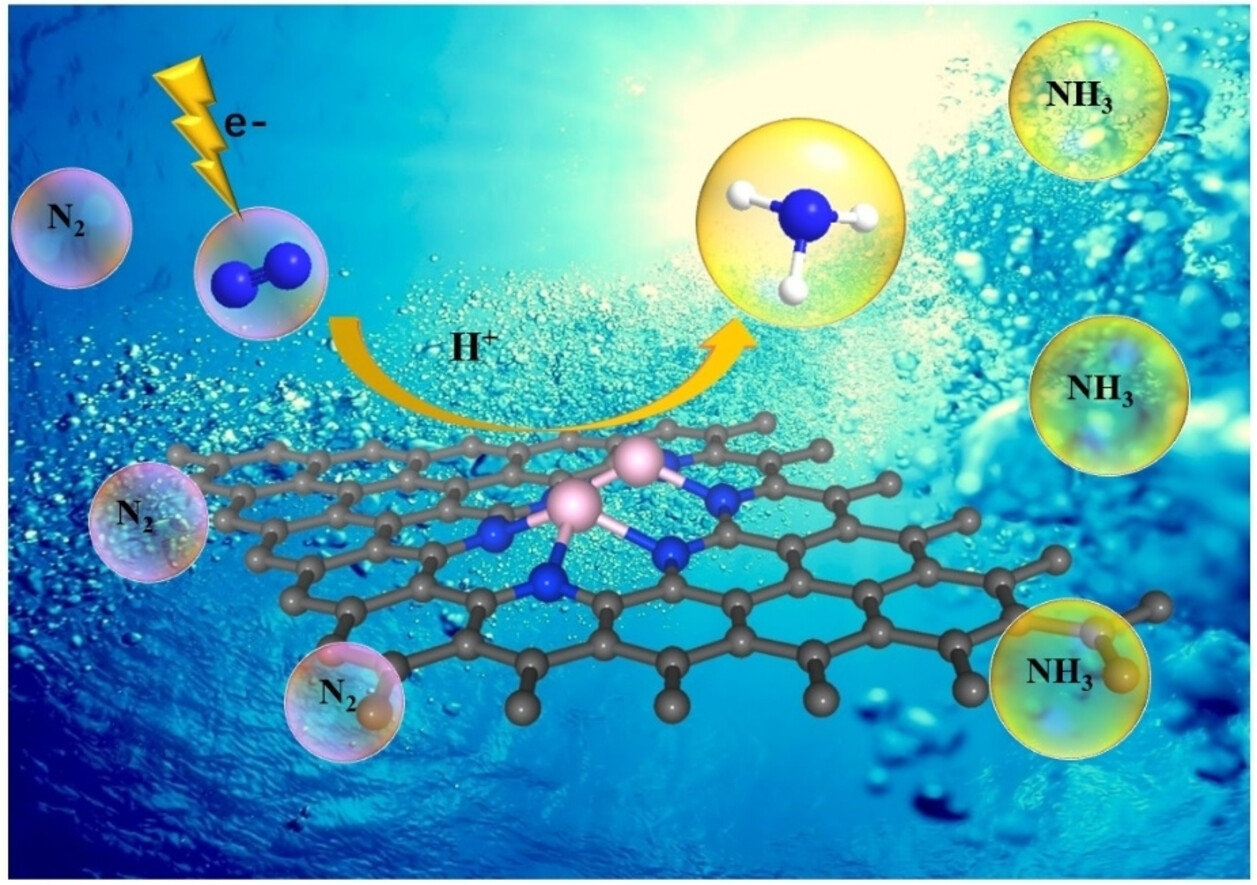
A metal-metal bonded dual-atomic Al−Al site was designed and synthesized on a nitrogen-doped porous carbon matrix for the electrocatalytic conversion of N2 to NH3. The catalyst with the bonded Al2-pair site exhibited high Faradaic efficiency and selective NH3 generation. The mechanism follows a six-electrons transfer pathway for the selective generation of NH3, as revealed by operando surface-enhanced IR spectroelectrochemistry.
MOF Membranes
Confined-Coordination Induced Intergrowth of Metal–Organic Frameworks into Precise Molecular Sieving Membranes
- First Published: 12 April 2024
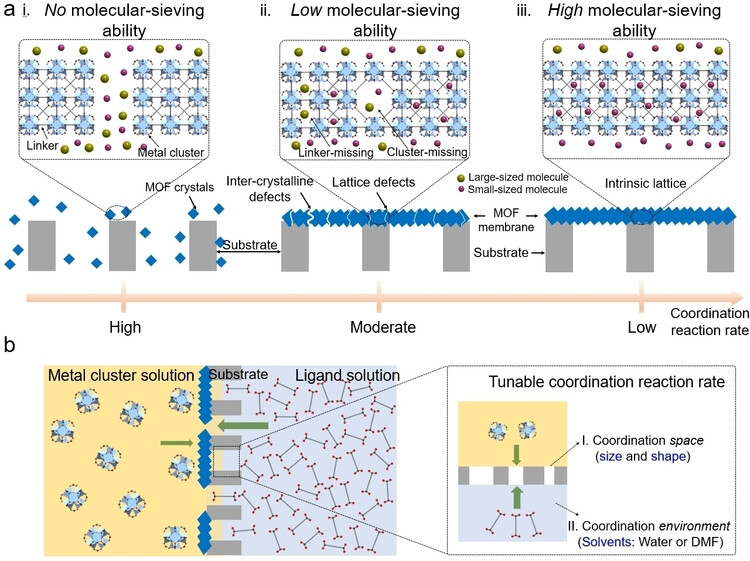
The coordination space properties (size and shape) and environment (solvents: water and DMF) were regulated to decrease the MOF nucleation and growth rate during membrane formation process, alleviating the preferential generation of MOF in the bulk solution and facilitating the intergrowth of MOF crystals into integrated membrane layer with progressively eliminating defects, which endows the MOF membrane with intrinsic angstrom-sized lattice apertures showing excellent H2/CO2 separation and water desalination performance.
H2O2 Synthesis | Hot Paper
Regulating the Topology of Covalent Organic Frameworks for Boosting Overall H2O2 Photogeneration
- First Published: 12 April 2024
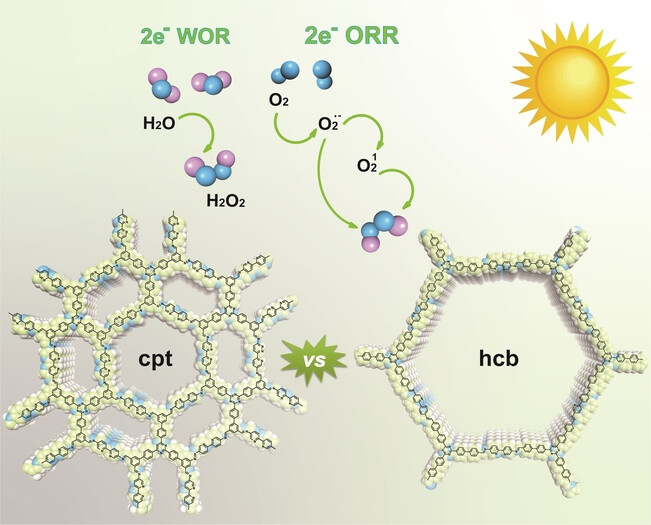
By linking site design, two novel two dimensional covalent organic frameworks (COFs) with similar chemical constitutions but different topologies were constructed. TBD-COF with six-arm cores and cpt topology exhibited better H2O2 photosynthetic activity than TBC-COF with three-arm cores and hcb topology through the O2-O2.−-H2O2, O2-O2.−-O21-H2O2, and H2O-H2O2 three channels, inspiring regulating the topology of COFs for boosting overall H2O2 photogeneration.
Proteins | Hot Paper
A Computational Pipeline for Accurate Prioritization of Protein-Protein Binding Candidates in High-Throughput Protein Libraries
- First Published: 08 April 2024

We introduce a computational pipeline that identifies peptide epitopes that bind a particular receptor from a library of possible protein sequences (e.g., coming from high-throughput experiments). The pipeline uses an AlphaFold-Competitive Binding Assay (AF-CBA) to rank order different plausible epitopes and select the most likely one.
Molecular Recognition | Hot Paper
Enantiopure Corral[4]BINOLs as Ultrastrong Receptors for Recognition and Differential Sensing of Steroids
- First Published: 09 April 2024
![Enantiopure Corral[4]BINOLs as Ultrastrong Receptors for Recognition and Differential Sensing of Steroids](/cms/asset/1960452d-7675-4825-a954-84bf3b4553f4/anie202406233-toc-0001-m.jpg)
A pair of enantiomeric macrocycles, RRRR- and SSSS-C[4]BINOL, demonstrated exceptionally high recognition affinities (up to 1012 M−1) towards 16 important steroidal compounds in aqueous solutions, establishing them the most effective known steroid receptors. The two C[4]BINOL enantiomers were employed to compose a fluorescent sensor array which achieved discrimination and sensing of 16 structurally similar steroids in biofluids.
Polymer Chemistry
On-Water Surface Synthesis of Vinylene-Linked Cationic Two-Dimensional Polymer Films as the Anion-Selective Electrode Coating
- First Published: 29 February 2024
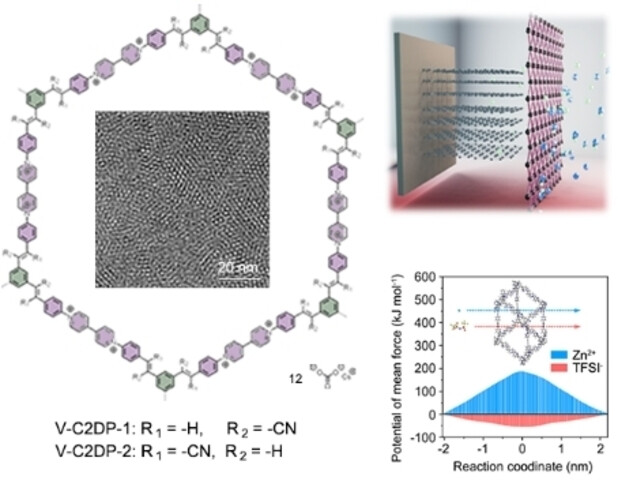
Two vinylene-linked cationic 2DPs (V-C2DPs) are synthesized on the water surface via Knoevenagel reaction, presenting as fully crystalline and highly oriented thin films. The obtained V-C2DPs exhibit well-defined cationic sites and 1D channels, facilitating the anion-selective transport. The integration of V-C2DPs as graphite cathode coatings into zinc-based dual-ion batteries (ZDIBs) enables to improve its specific capacity and cycling life.
Chemoenzymatic Processes
Design of 3D-Printed Heterogeneous Reactor Systems To Overcome Incompatibility Hurdles when Combining Metal and Enzyme Catalysis in a One-Pot Process
- First Published: 13 January 2024
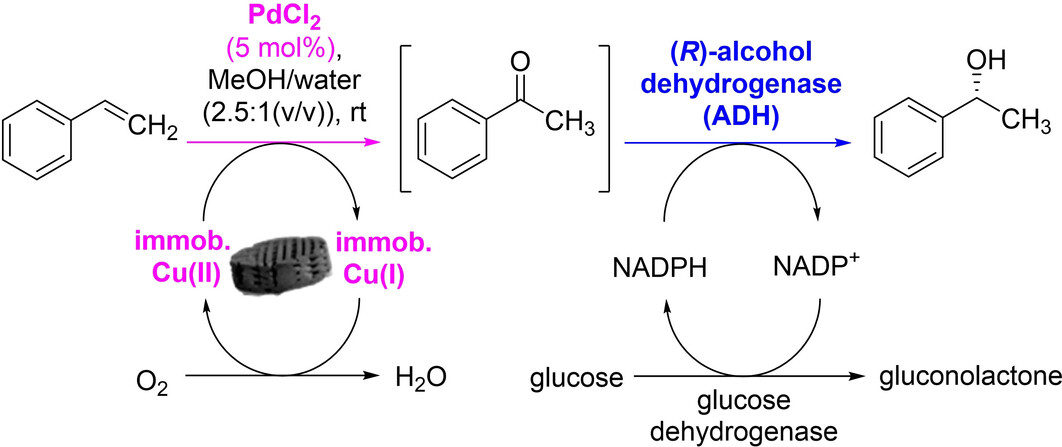
The combination of Wacker oxidation and enzymatic reduction in one reactor in spite of the use of incompatible catalysts is demonstrated. The chemoenzymatic process is based on embedding enzyme-deactivating Cu ions in a 3D-printed ceramic scaffold, which then “shields” the enzyme from the critical Cu component. By such compartmentalization, the desired product was obtained with 80 % overall conversion and excellent enantioselectivity (99 % ee).
Organometallic Chemistry
Germaaluminocenes—Masked Heterofulvenes
- First Published: 05 April 2024

The reactivity pattern of germaaluminocenes is determined by the dichotomy of the electron-deficient aluminum atom and the electron-rich germanium center. The analysis of the product spectra obtained from the reaction with standard reagents reveals the role of these main group sandwich complexes as synthetic equivalents of otherwise not accessible aluminagermapentafulvenes.
Supramolecular Chemistry
Shape-Complementary Multicomponent Assembly of Low-Symmetry Co(III)Salphen-Based Coordination Cages
- First Published: 04 April 2024
Communications
MOF Mixed Matrix Membranes
Self-Sorting of Interfacial Compatibility in MOF-Based Mixed Matrix Membranes
- First Published: 08 April 2024

The spontaneous partitioning of MOF particles into one polymer domain in a phase separated-mixed matrix membrane (PS-MMM) realizes rapid ranking of the interfacial compatibility of various MOF-polymer pairs. This strategy will be a valuable tool to guide the design of MMMs with more predictable gas separation properties.
Synthetic Methods
Mechanistic Approach Toward the C4-Selective Amination of Pyridines via Nucleophilic Substitution of Hydrogen
- First Published: 08 April 2024
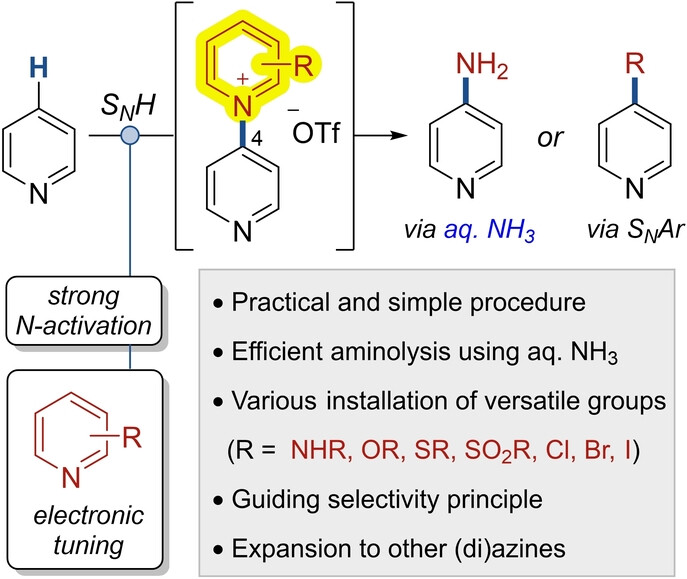
Tailored pyridine reagents undergo nucleophilic substitution of hydrogen (SNH) reactions with activated pyridines to afford pyridyl pyridinium salts in C4-selectivity. These salts can be in situ converted to 4-aminopyridines by aqueous ammonia or utilized as synthetic linchpins for general pyridine C4-functionalization. The elucidation of the selectivity principles has further guided the C4-selective functionalization of other (di)azines.
Photochemistry
Stereoselective Synthesis of Polysubstituted Conjugated Dienes Enabled by Photo-Driven Sequential Sigmatropic Rearrangement
- First Published: 08 April 2024
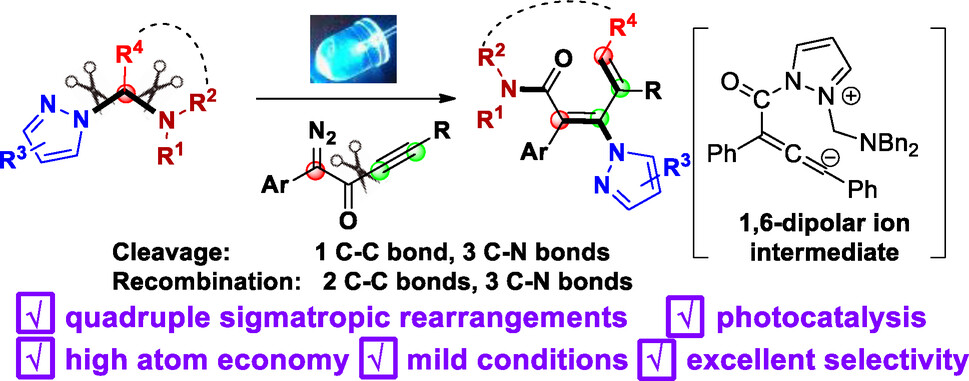
An unprecedented photo-driven quadruple sequential sigmatropic rearrangements of α-aryl α-diazo alkynylketones with aminals via 1,6-dipolar ion intermediate is disclosed. This protocol provides a facile access to synthetically useful multi-substituted conjugated dienes in highly stereoselective manner via visible light catalysis in mild conditions.
Polymer Chemistry
Achieving Exceptional Thermal and Hydrolytic Resistance in Chemically Circular Polyesters via In-Chain 1,3-Cyclobutane Rings
- First Published: 08 April 2024
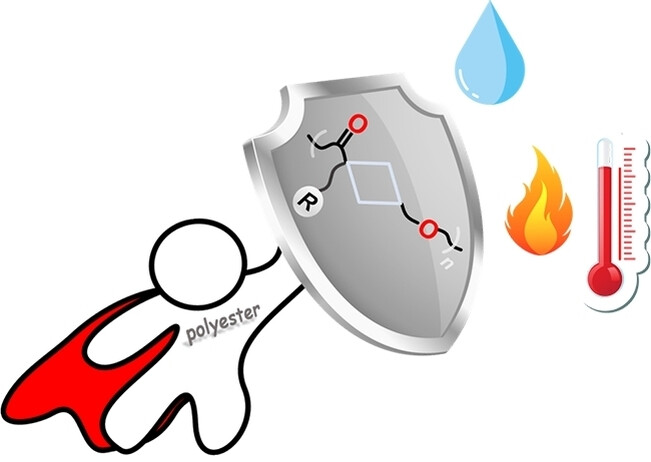
Polyesters P(4R-BL) (R=Ph, Bu), with 1,3-cyclobutane rings in the backbone, have been developed to demonstrate exceptional thermal stability (Td,5%=376–380 °C) and resistance to hydrolysis (intact in pH 0–14). Distinguished from classic polyesters, they exhibit good chemical circularity and offer adjustable material performances comparable to those of non-degradable syndiotactic polystyrene and low-density polyethylene.
Asymmetric Synthesis
Asymmetric Synthesis of SCF3-Substituted Alkylboronates by Copper-Catalyzed Hydroboration of 1-Trifluoromethylthioalkenes
- First Published: 12 March 2024

A copper-catalyzed regio- and enantioselective hydroboration of 1-trifluoromethylthio(SCF3)-alkenes with H-Bpin has been developed. The enantioselective hydrocupration and subsequent boration reaction generate a chiral SCF3-containing alkylboronate, of which Bpin moiety can be further transformed to deliver various optically active SCF3 molecules. Computational studies suggest that SCF3 group successfully controls the regioselectivity.
Defluorination Chemistry
Selective Defluorination of Trifluoromethyl Substituents by Conformationally Induced Remote Substitution
- First Published: 08 April 2024

Amide derivatives of trifluoromethyl-substituted benzaldehydes, and their heterocyclic congeners, may be selectively cyclodefluorinated by a remote substitution reaction under mild conditions, giving difluoromethyl-substituted aldehydes after hydrolysis. Selective single and double defluorinations are possible using this method, which provides a versatile route to difluoromethyl arenes.
Synthetic Methodology | Hot Paper
Perfluorooxosulfate Salts as SOF4-Gas-Free Precursors to Multidimensional SuFEx Electrophiles
- First Published: 17 April 2024

Sulfurimidoyl difluorides (RNSOF2) are excellent multidimensional SuFEx hubs, however their preparation from the scarcely available thionyl tetrafluoride (SOF4) gas limits this chemistry. Here, we propose silver pentafluorooxosulfate (AgOSF5) as a viable alternative to SOF4. Prepared by the AgF2-mediated oxidation of SOCl2, we found that the adduct produces sulfurimidoyl fluorides in high yields from primary amines, also extendable to AgOSF4CF3.
C-H Activation | Hot Paper
Beyond Tertiary Amines: Introducing Secondary Amines by Palladium/Norbornene-Catalyzed Ortho Amination
- First Published: 05 April 2024
Synthetic Methods
Ni-Catalyzed Linearizable Cyclization/Coupling with Detachable Silicon-Oxygen Linker: Access to 1,2-Oxasilolanes, 3-Hydroxysilanes and 4-Arylalkanols
- First Published: 11 April 2024
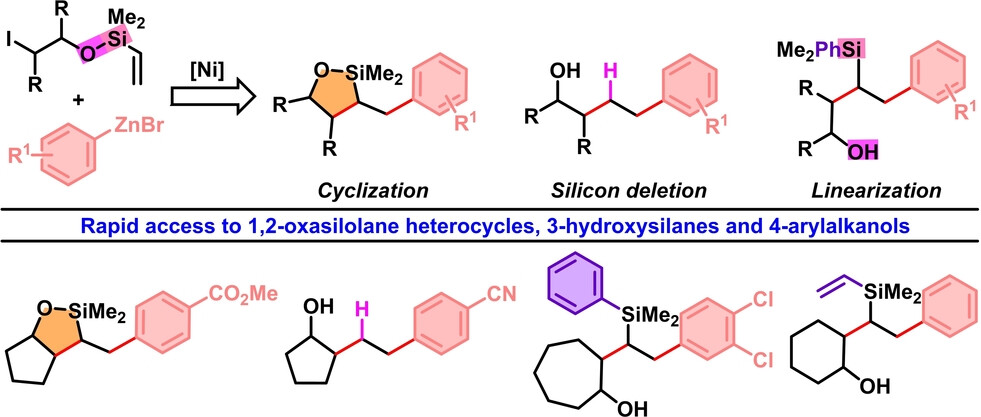
A Ni-catalyzed cyclization/coupling has been developed in which the products are readily linearized to permit regiodefined alkene dicarbofunctionalization. In this reaction, a silicon-oxygen (Si−O) bond functions as a detachable linker that can be delinked with several hydride, alkyl, aryl and vinyl nucleophiles to create profusely functionalized 3-hydroxysilanes.
Organic Materials | Hot Paper
Buffer Chain Model for Understanding Crystallization Competition in Conjugated Polymers
- First Published: 08 April 2024
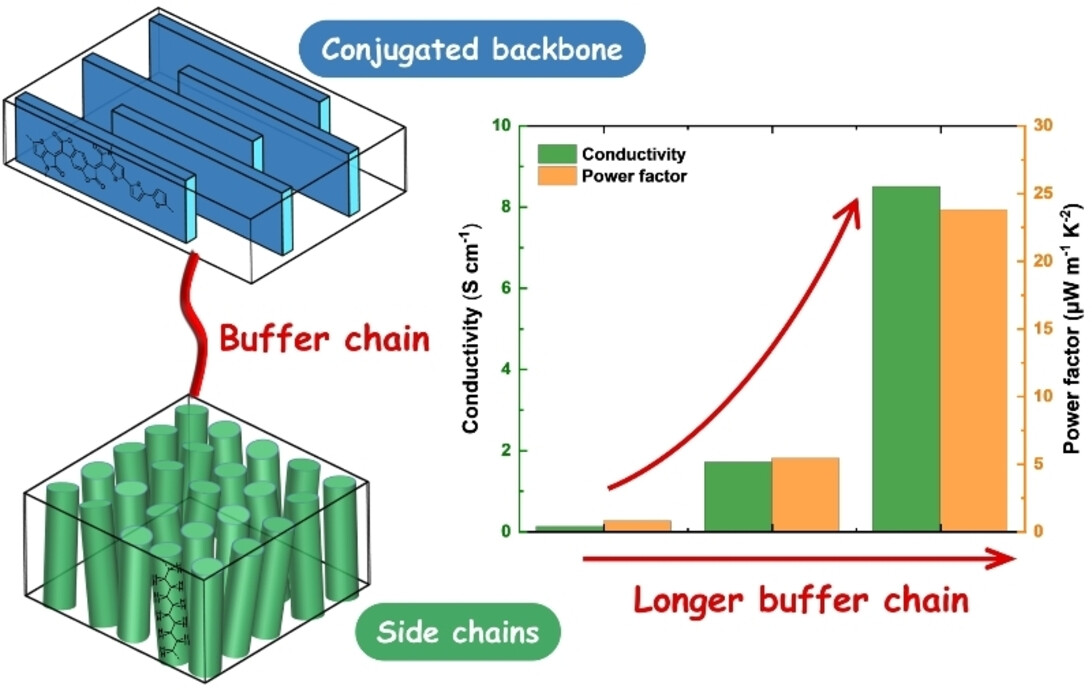
Crystallization competition between conjugated backbones and side chains is critical to obtaining modulated microstructures and improved properties of conjugated polymers. A buffer chain model is proposed here to describe the linker between backbone and side chains. Longer buffer chains in a model polymer system could effectively relieve this crystallization competition, resulting in better charge transport performance.
Fluorescent Probes
Disaggregation-Activated pan-COX Imaging Agents for Human Soft tissue Sarcoma
- First Published: 12 April 2024
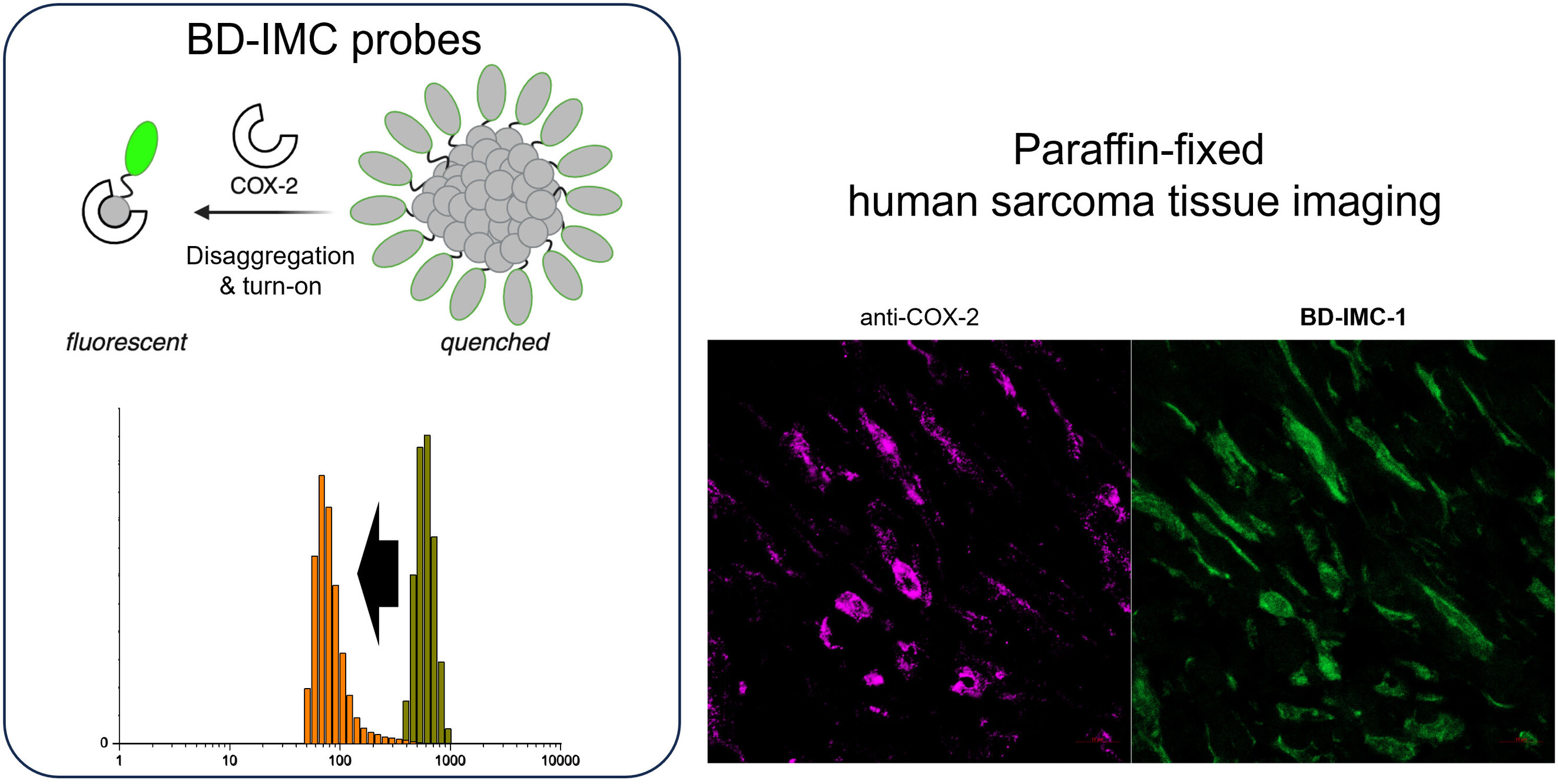
First disaggregation induced pan-COX imaging agents shed light on cancer stem cells in human sarcoma tissue. Using the pan-COX targeting indomethacin conjugated BODIPY fluorophore, disaggregation dependent turn-on chemosensor was designed for parafin-fixed tissue imaging. Disaggregation schematics are created with BioRender.com




